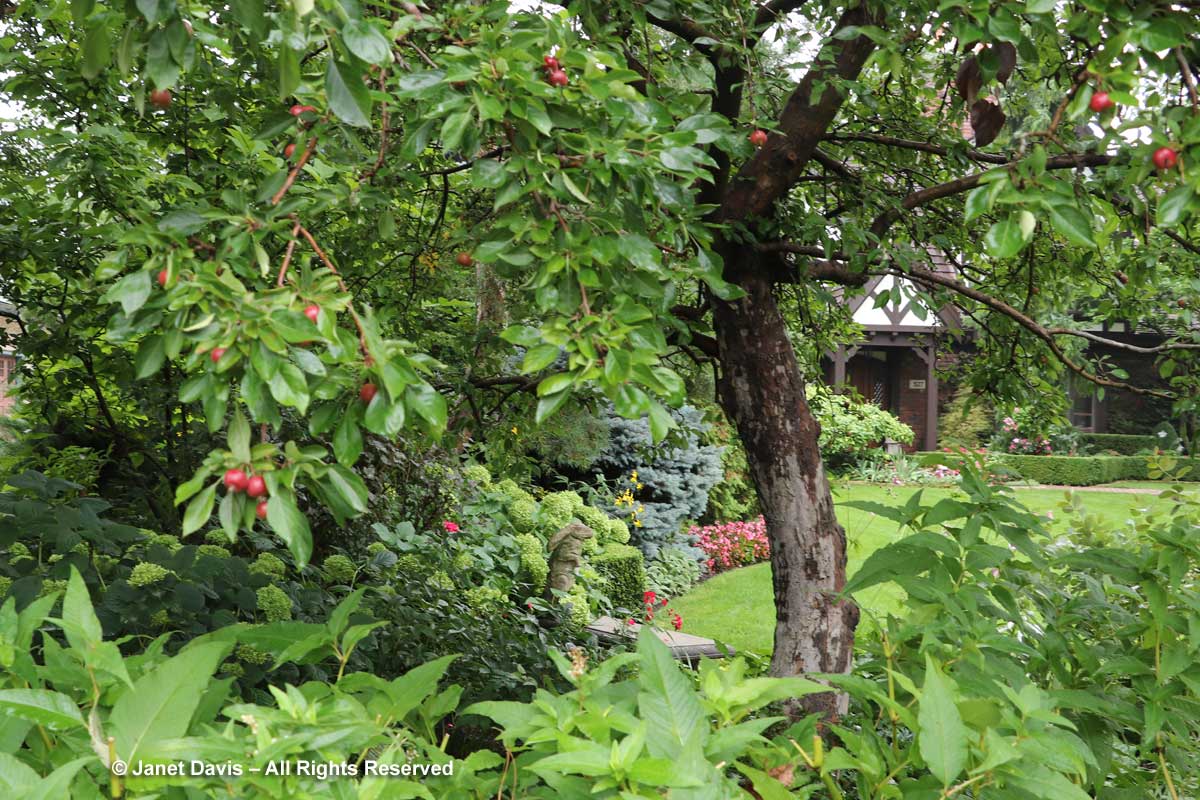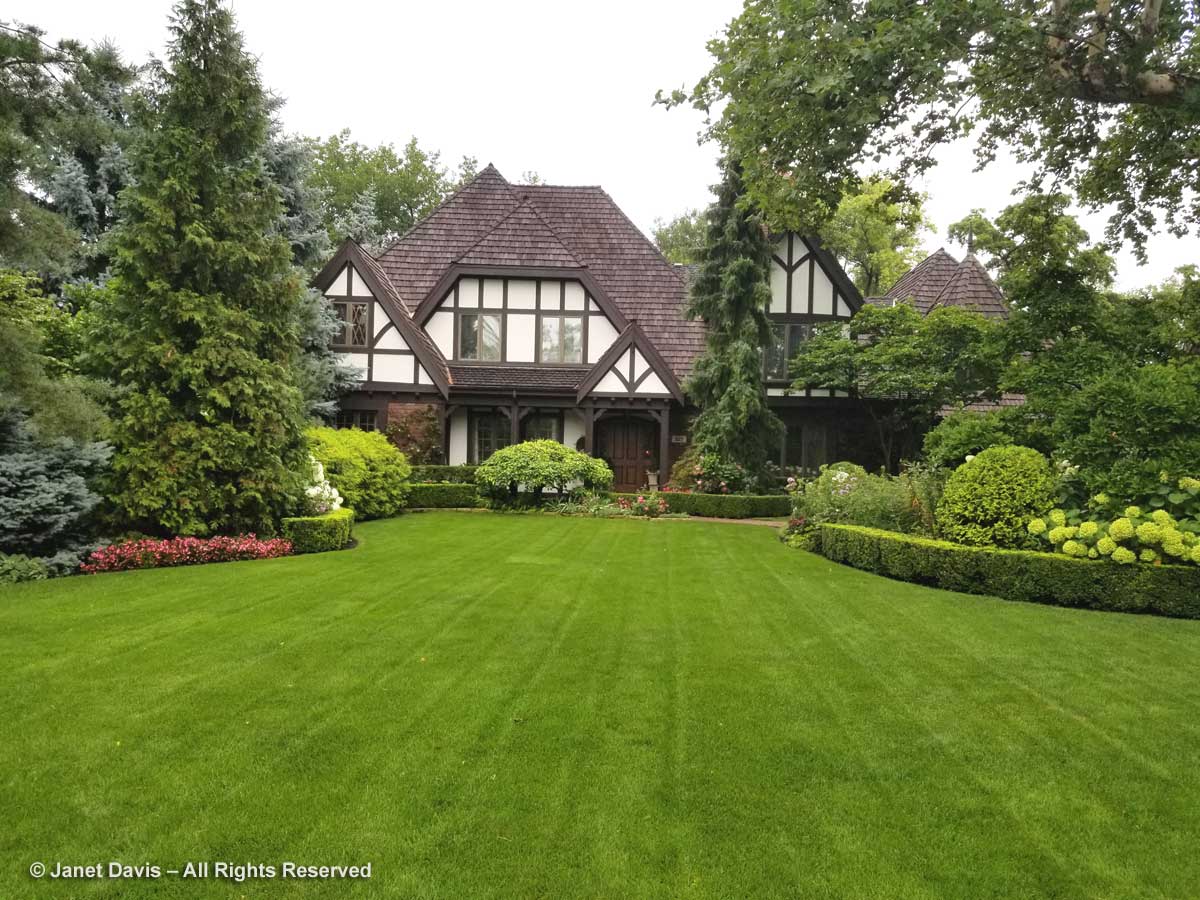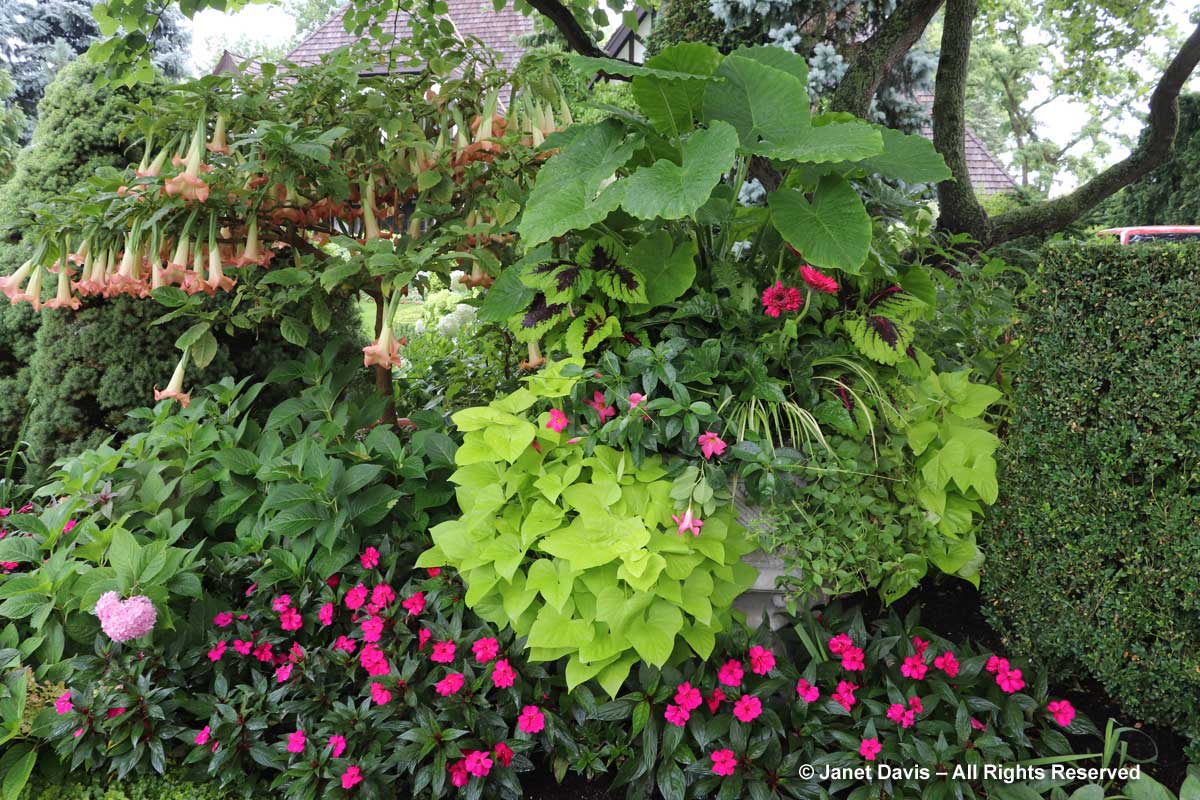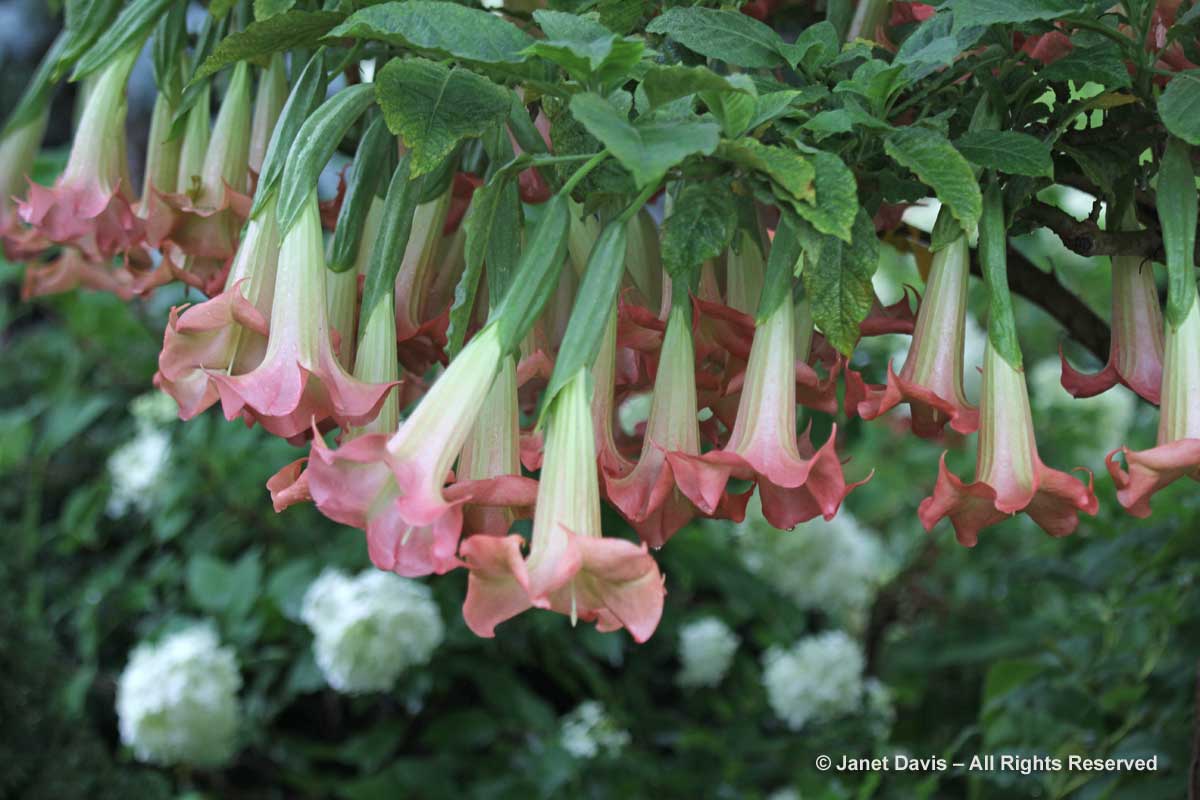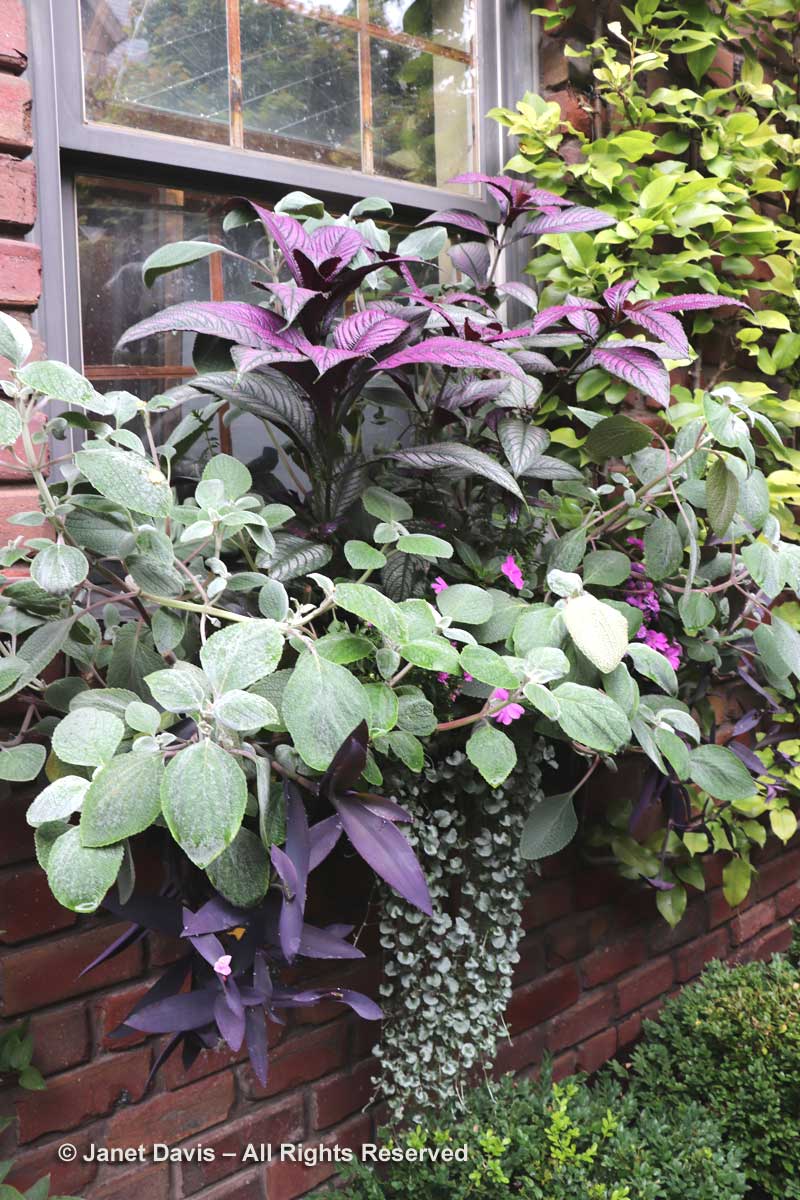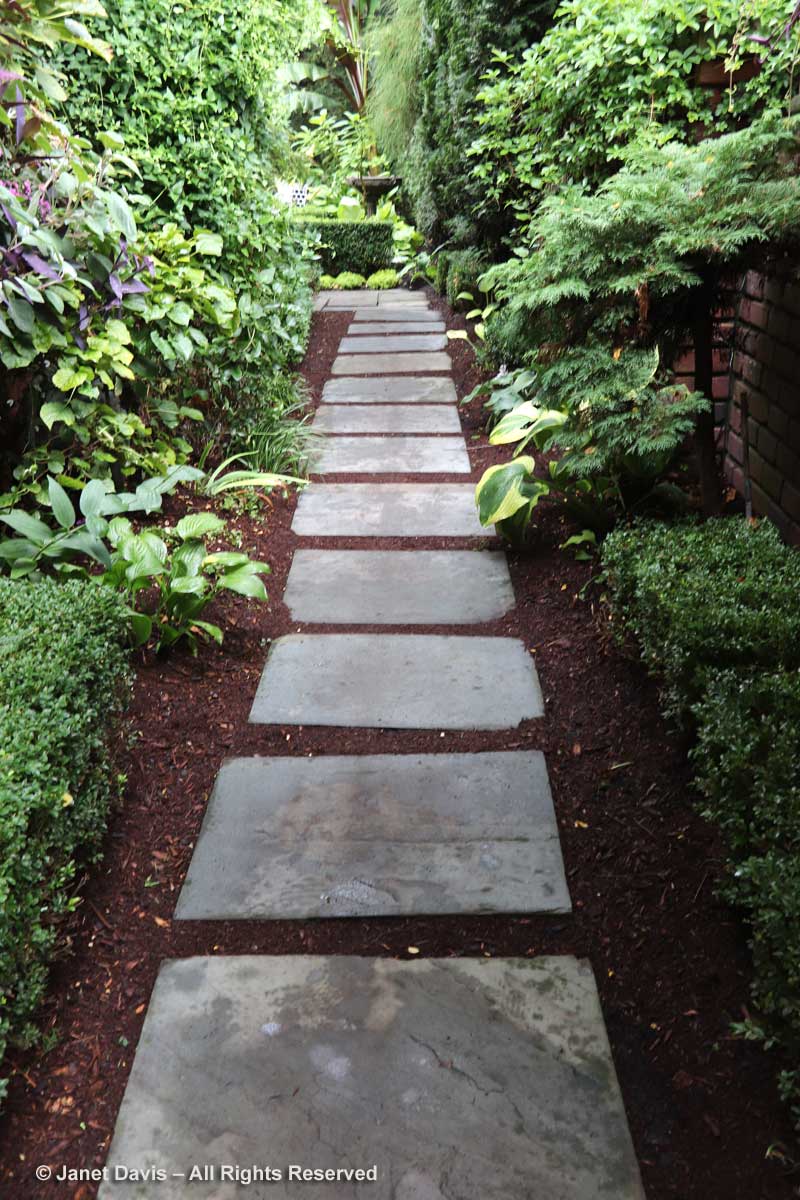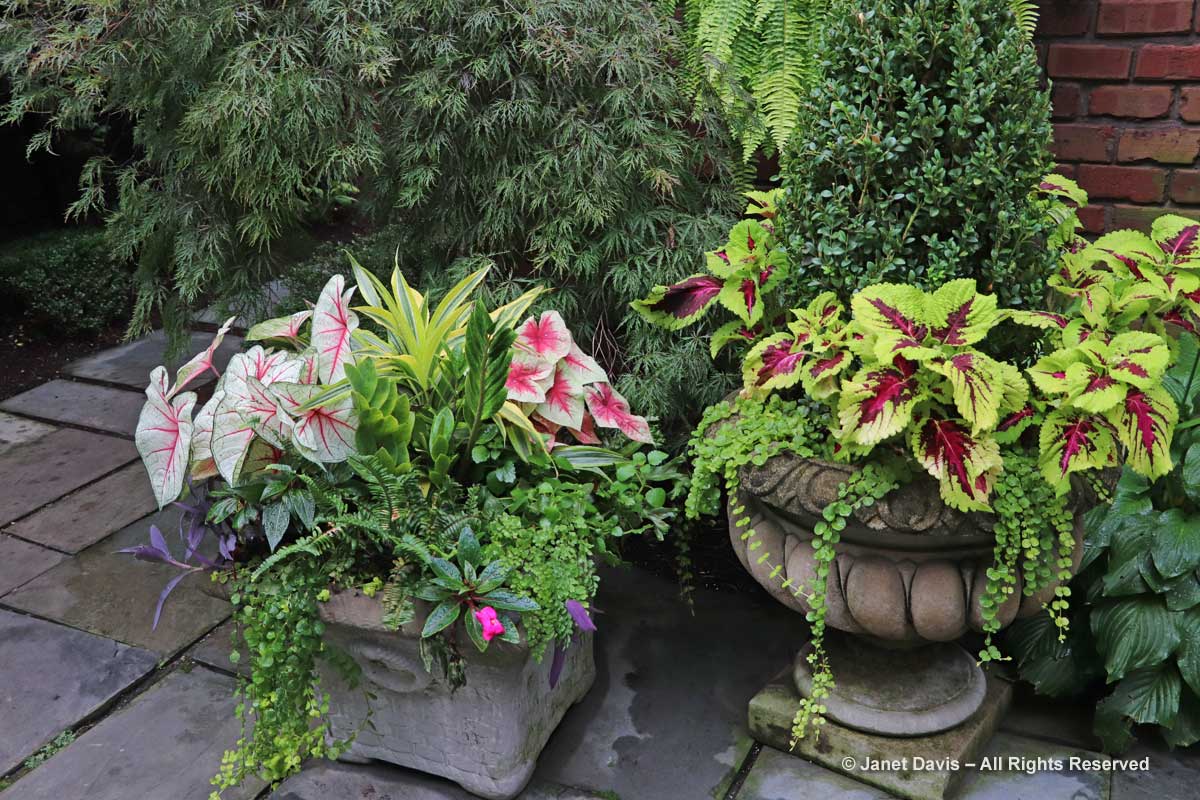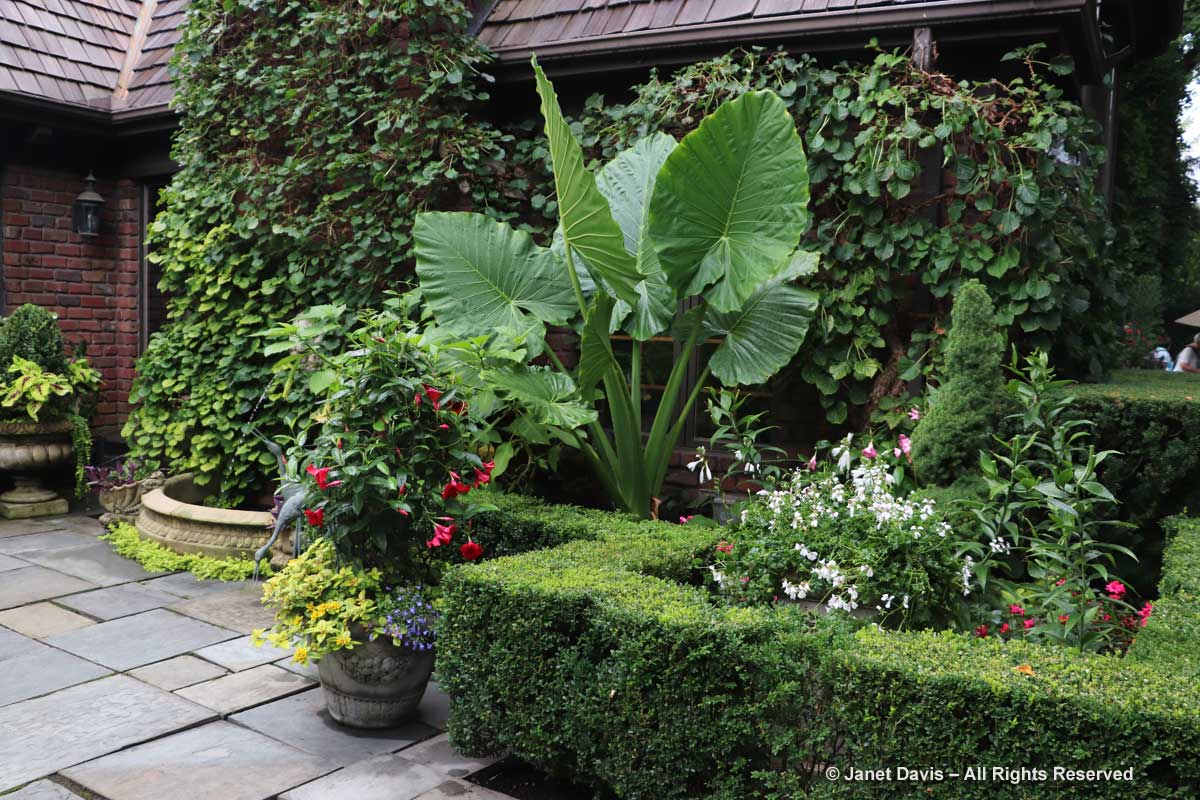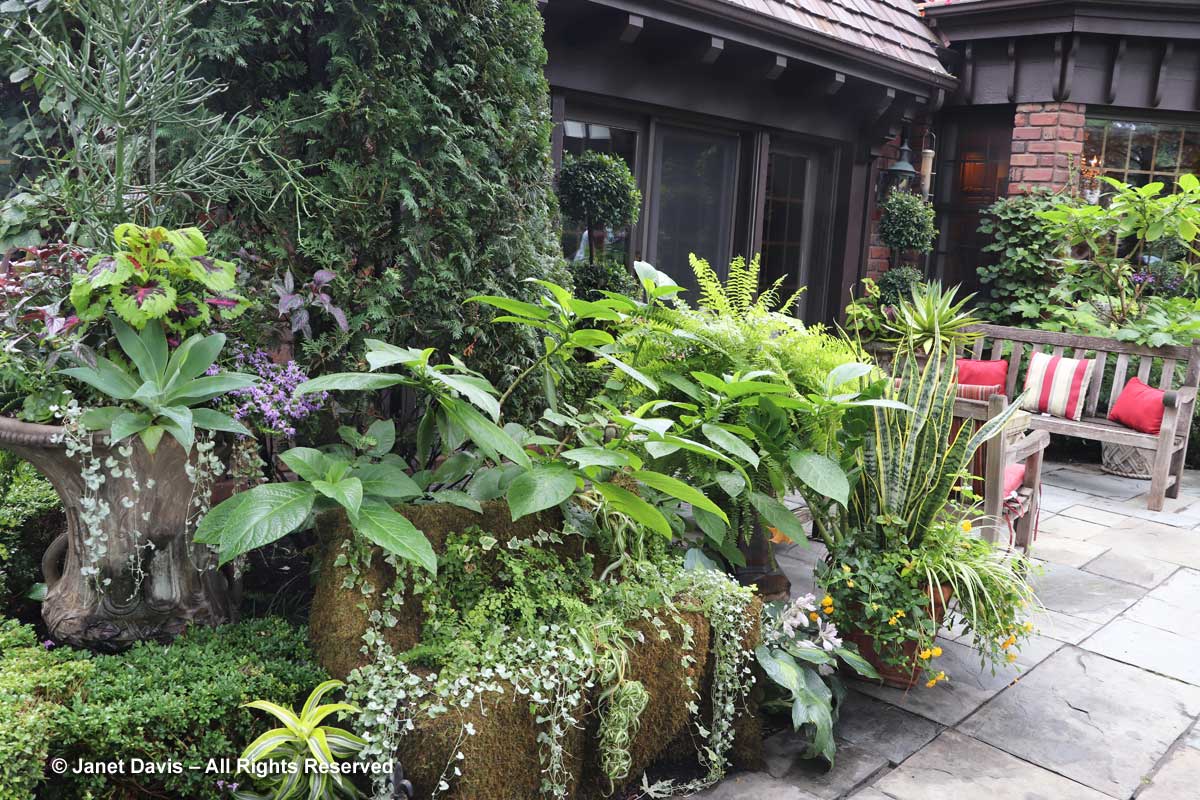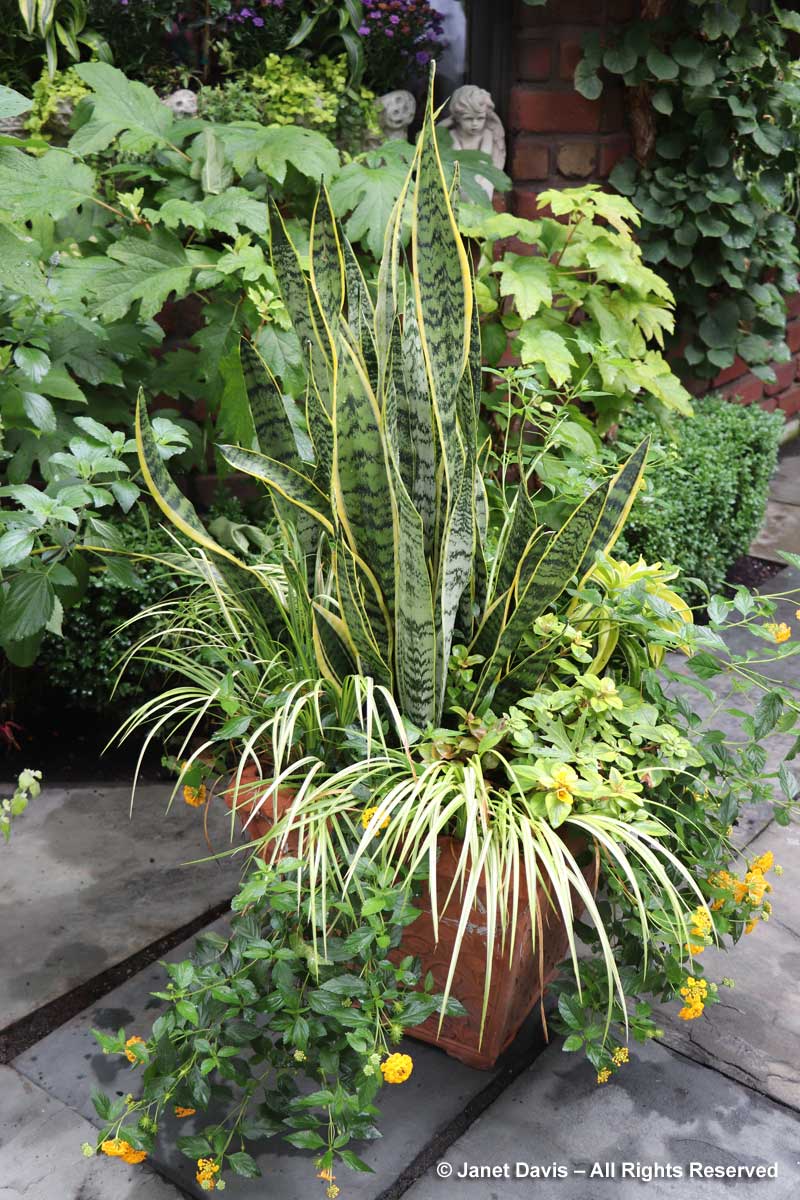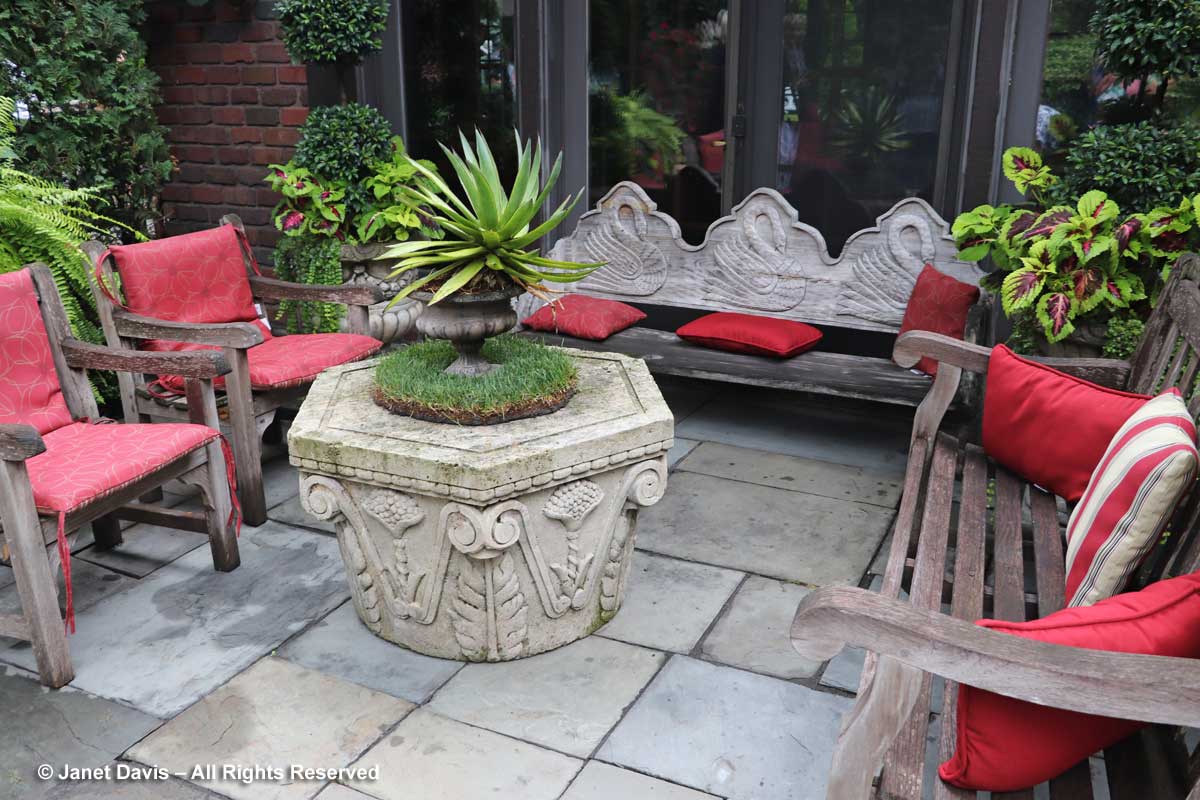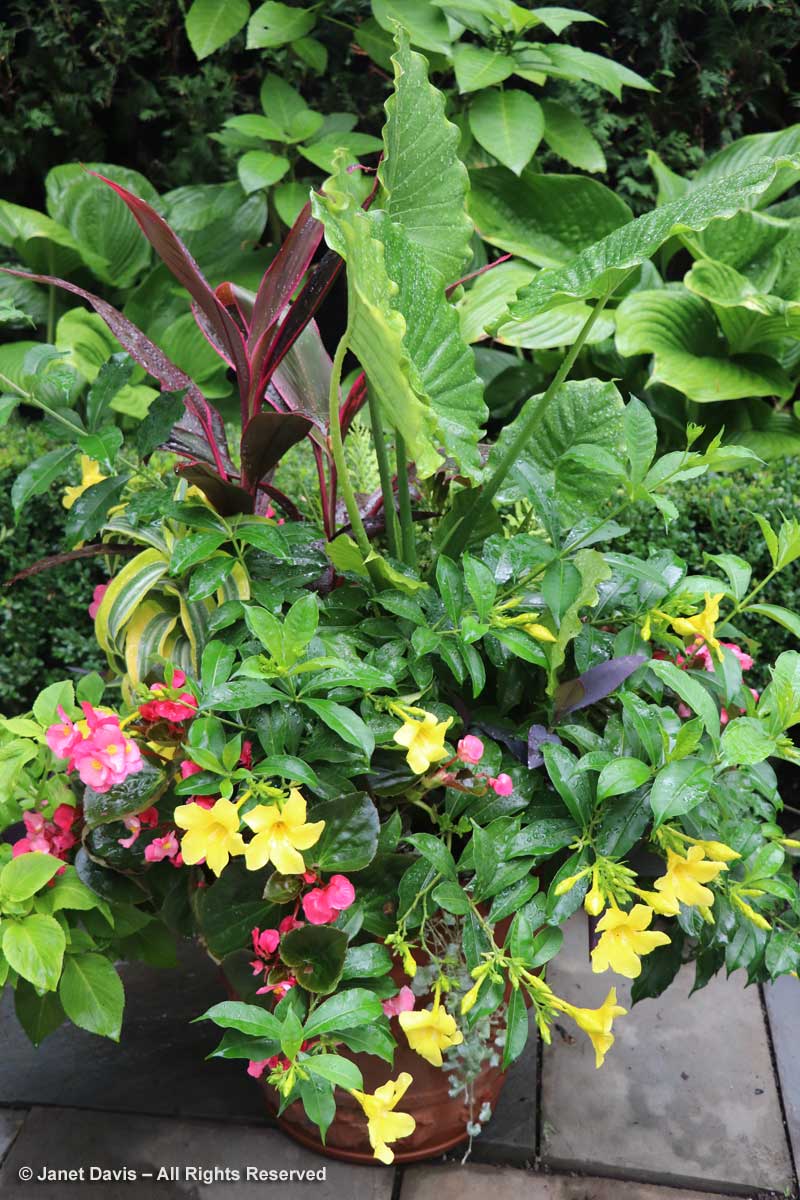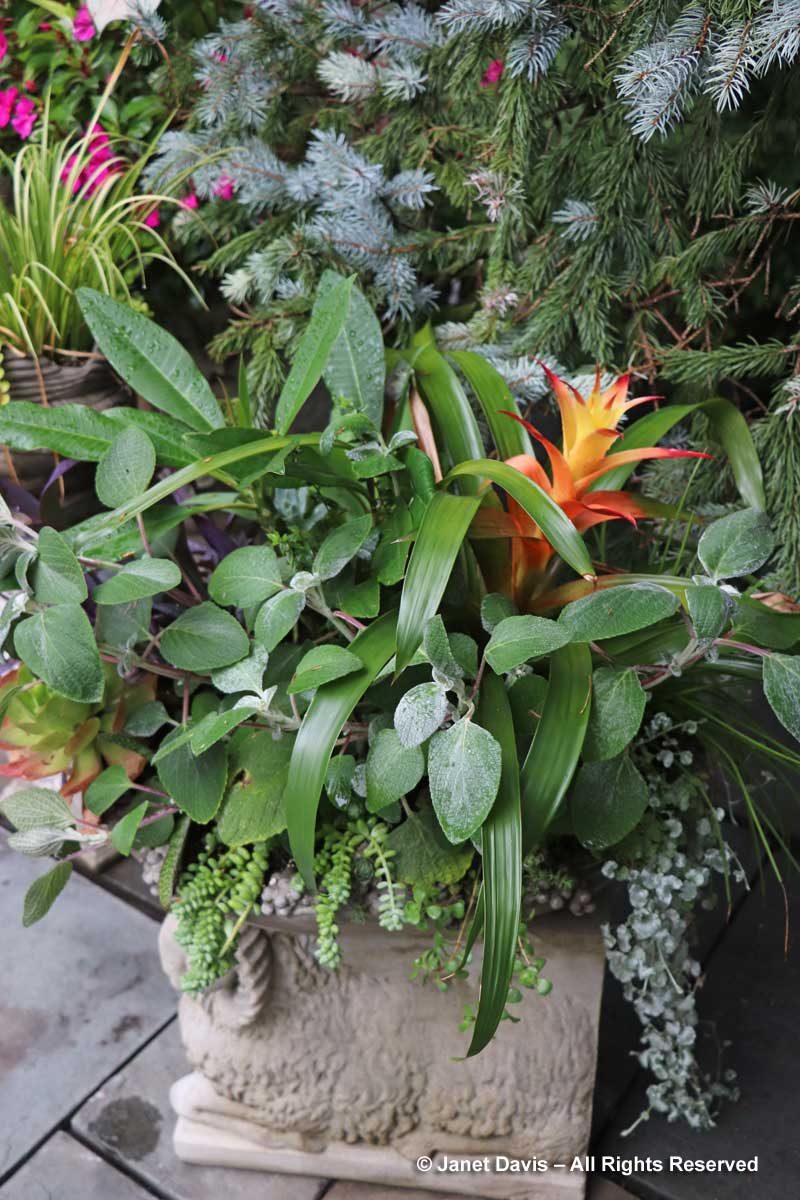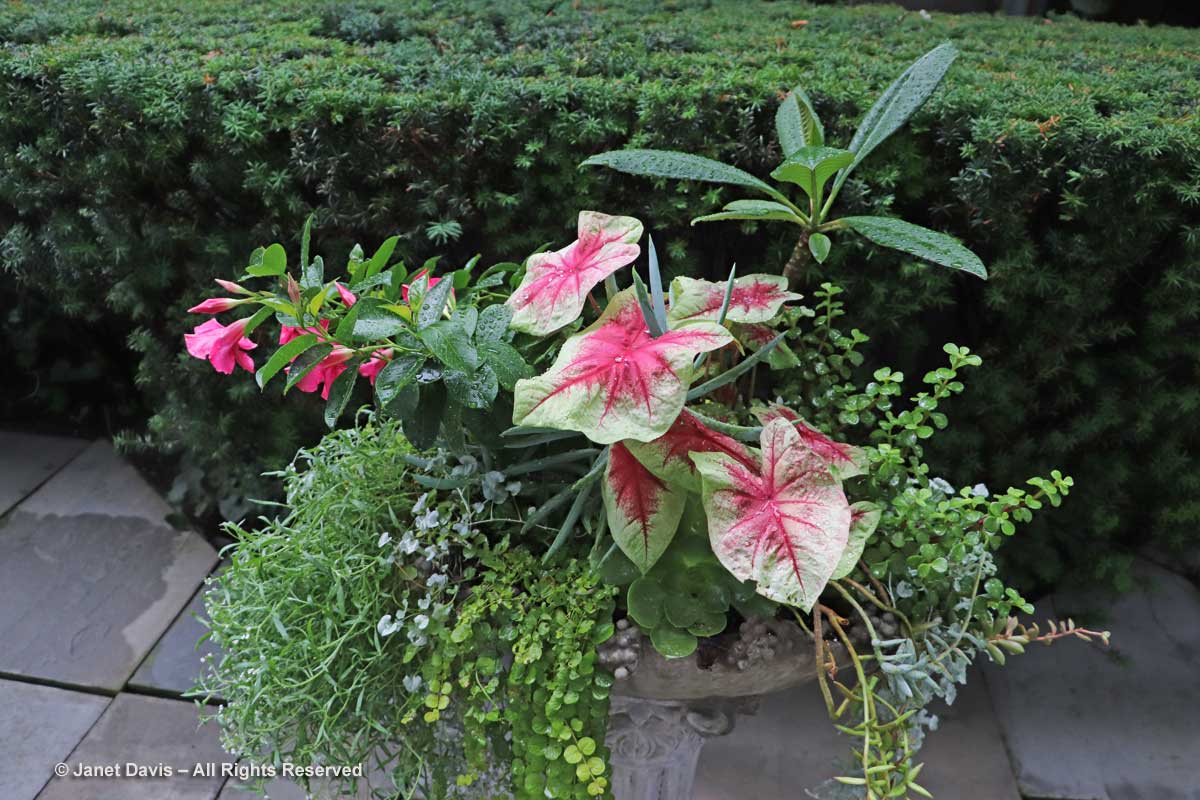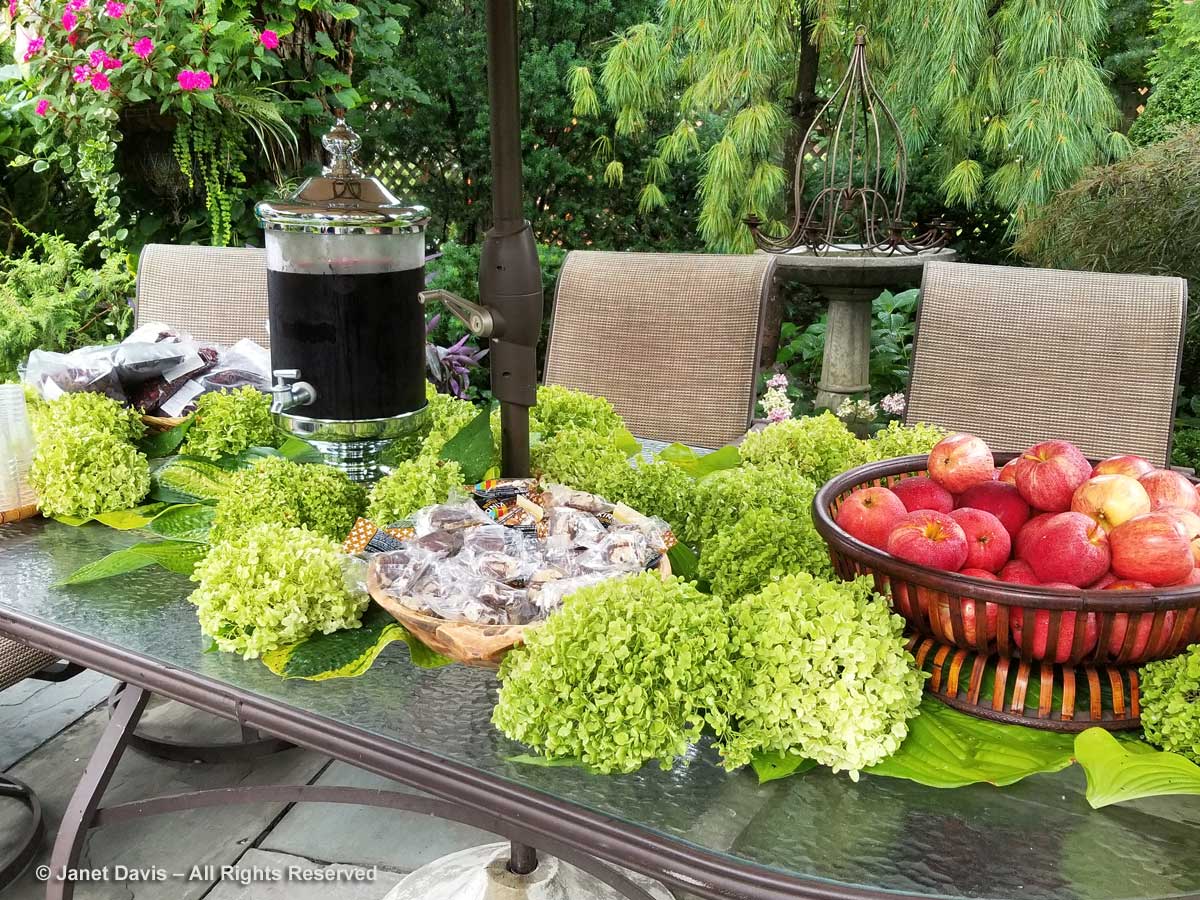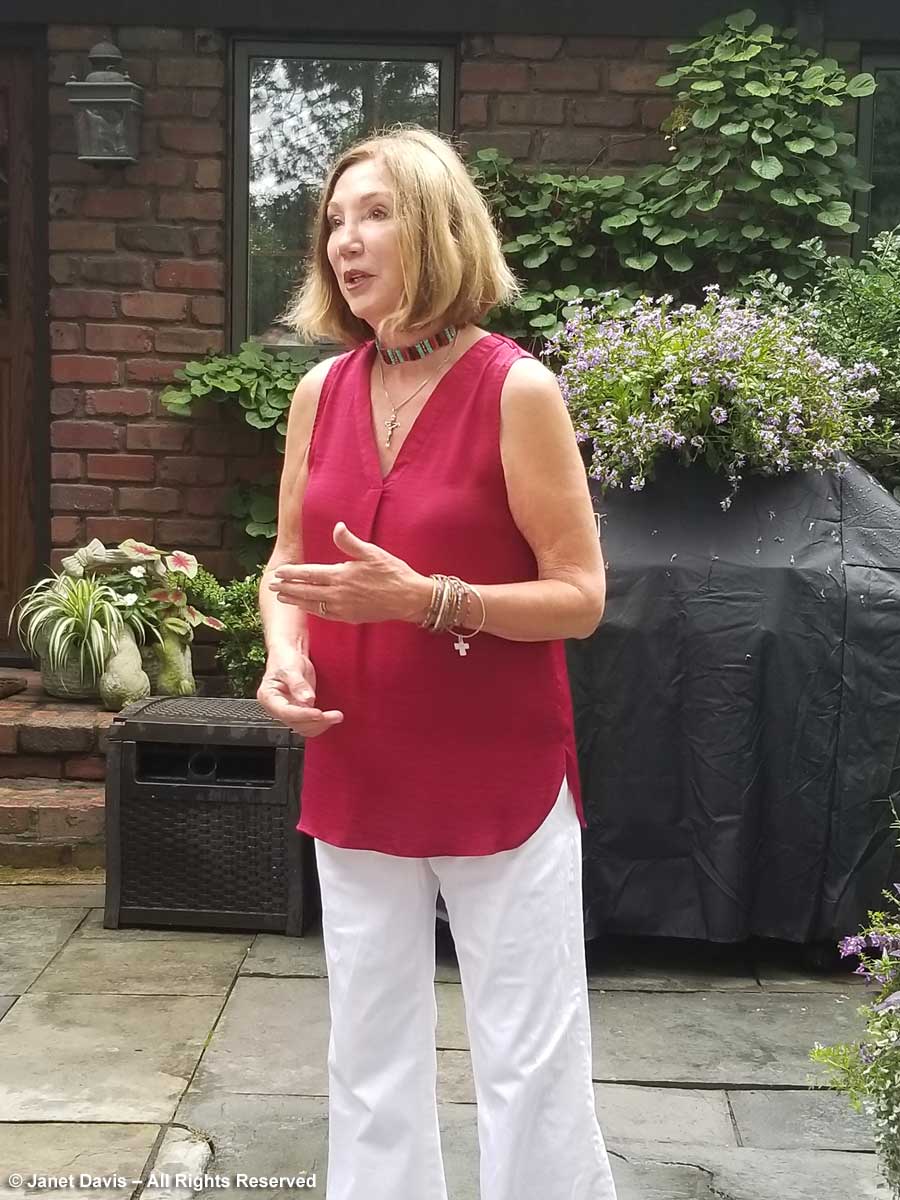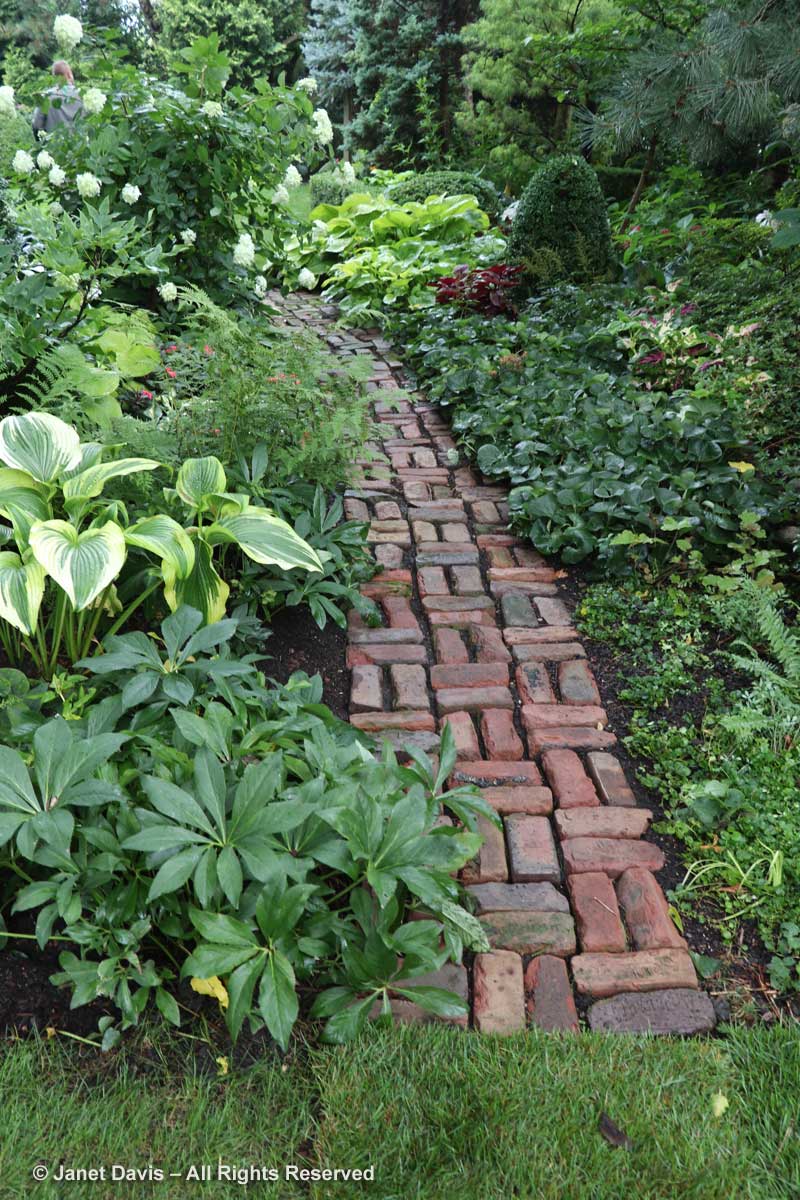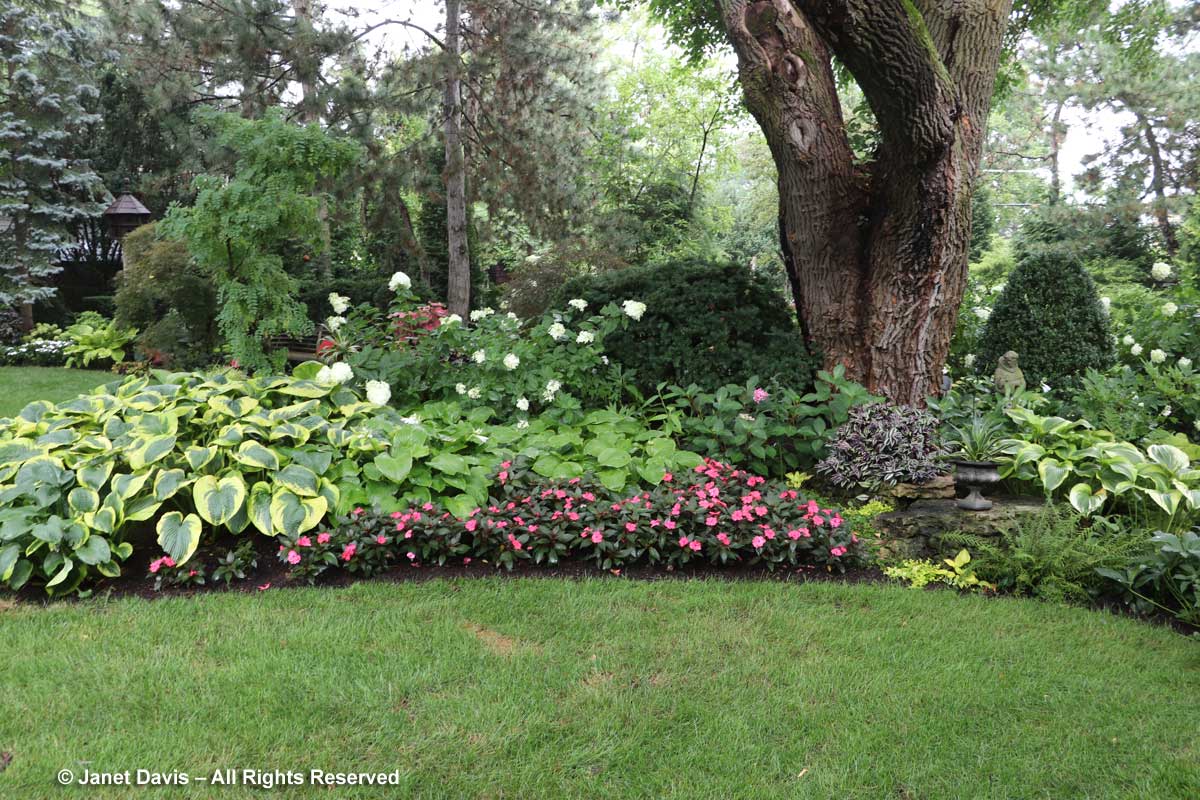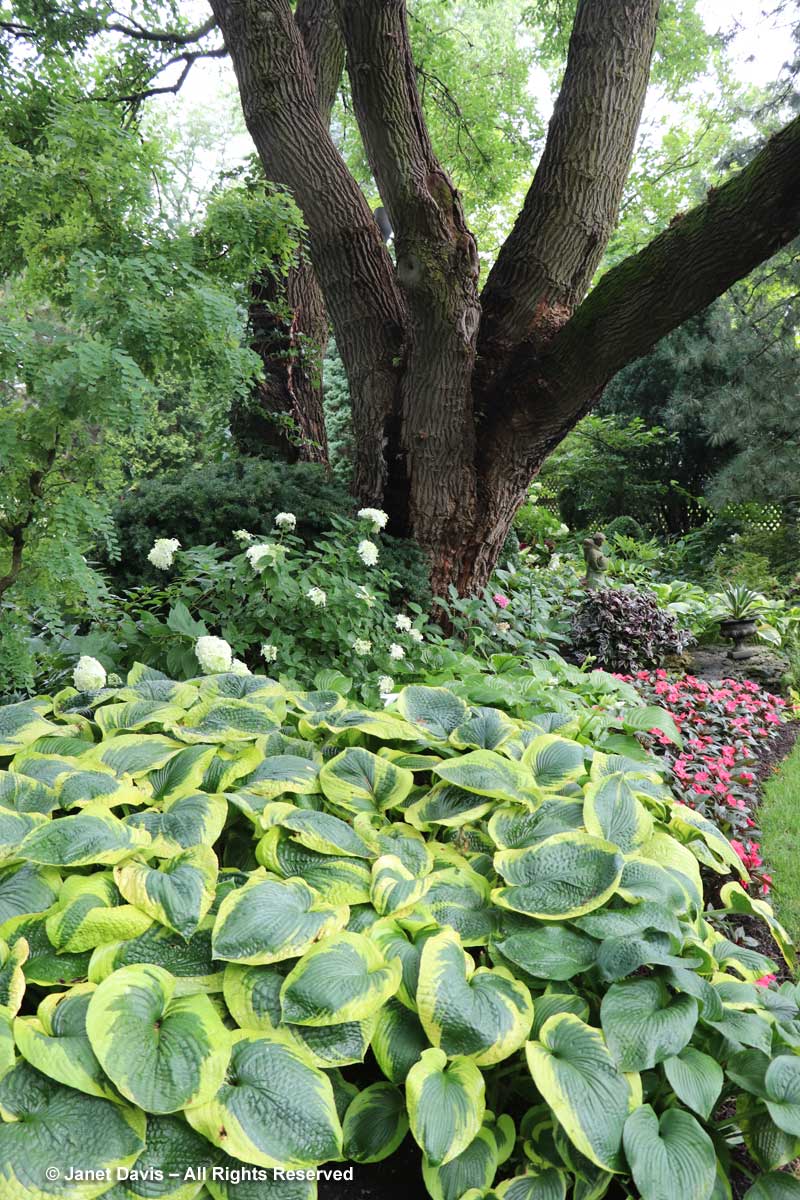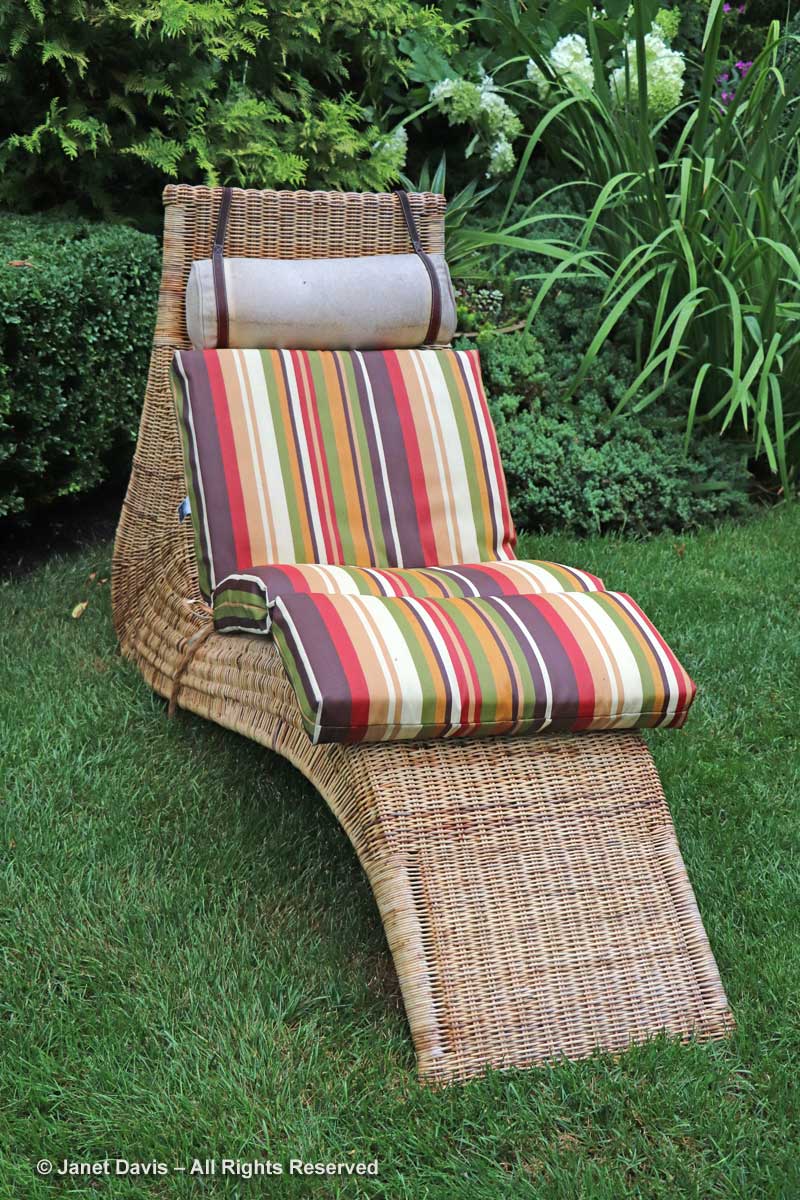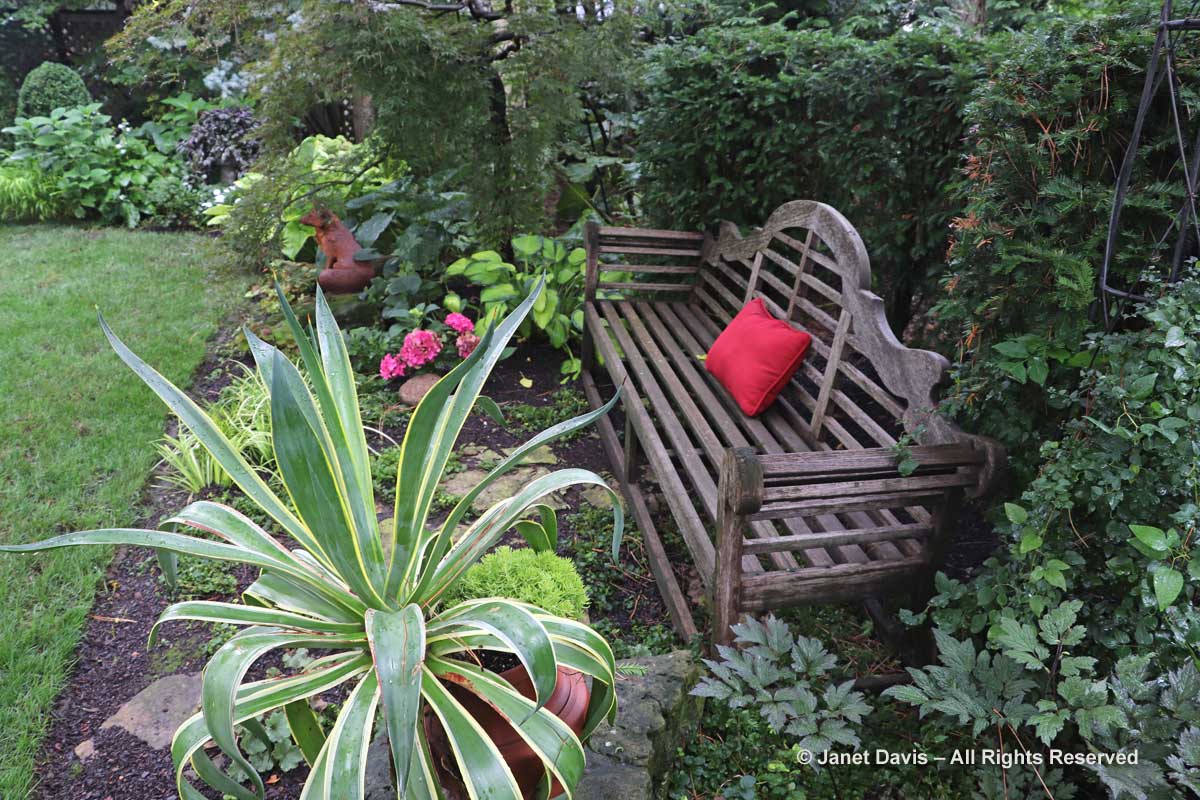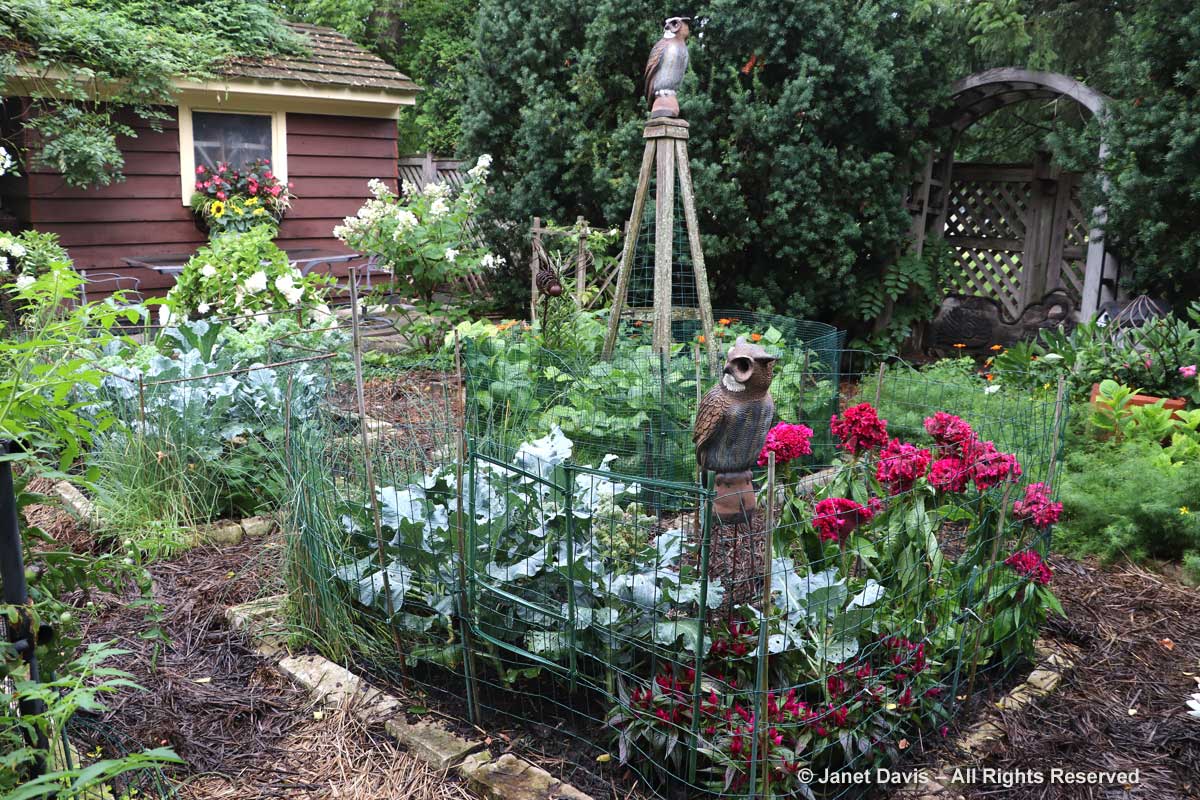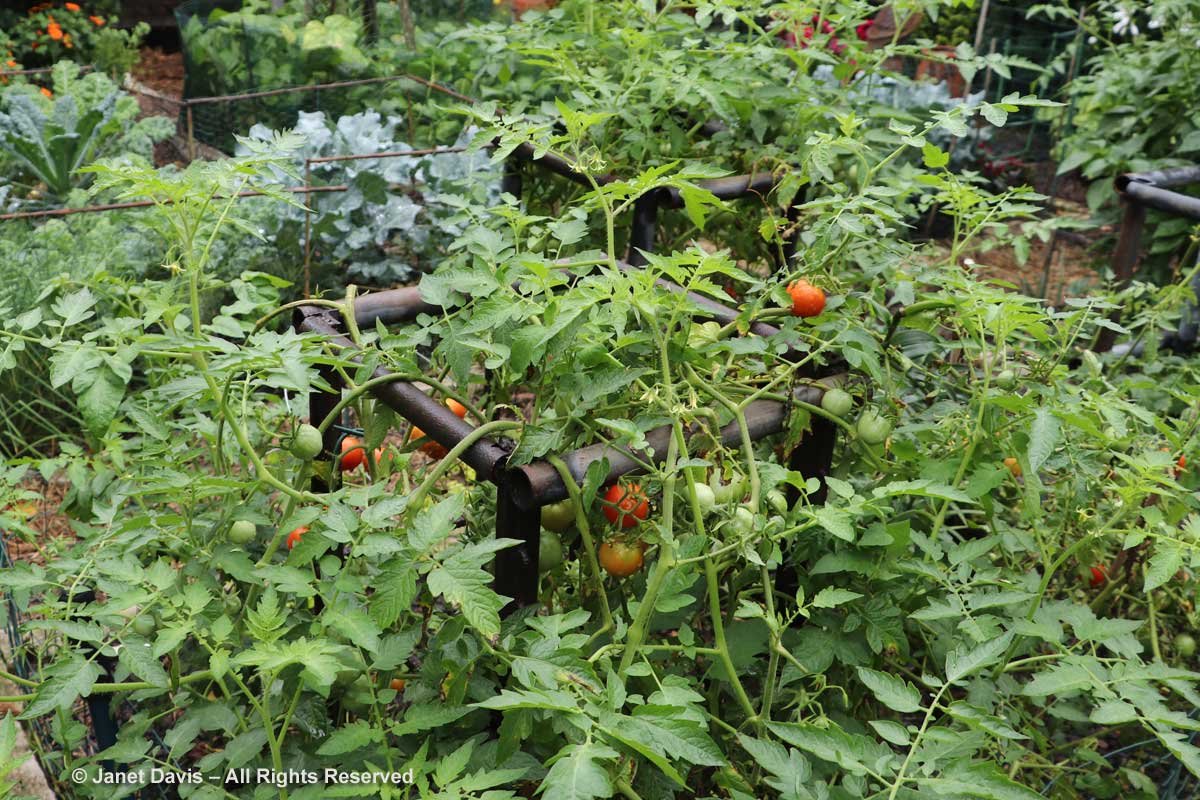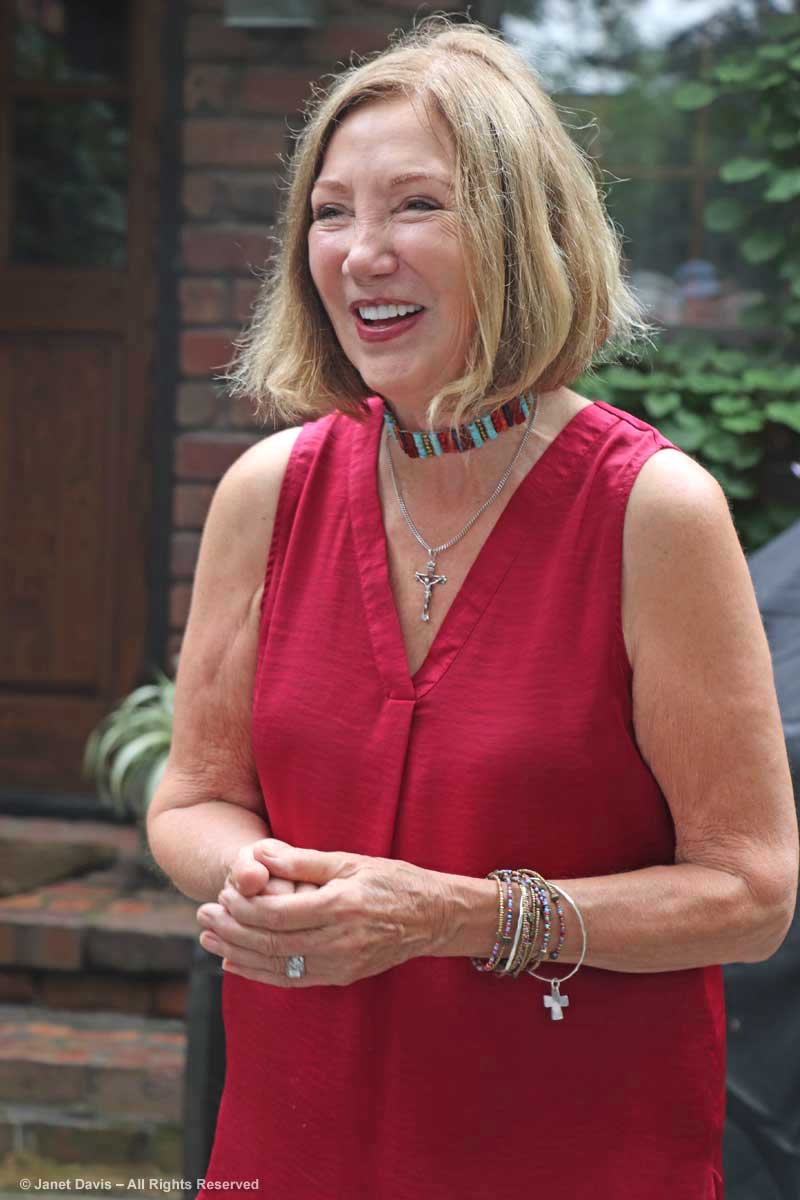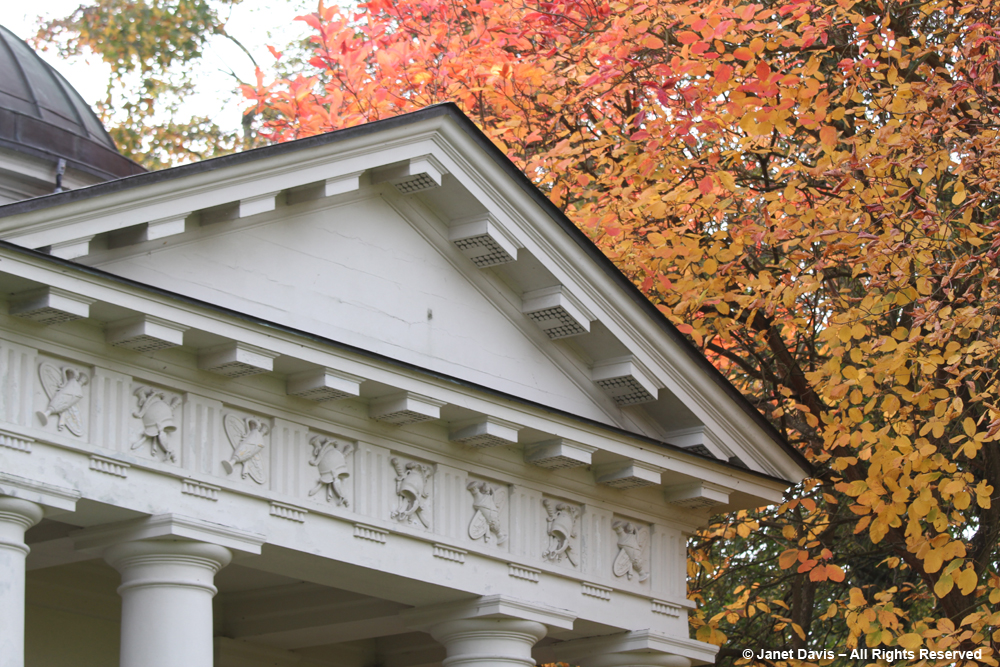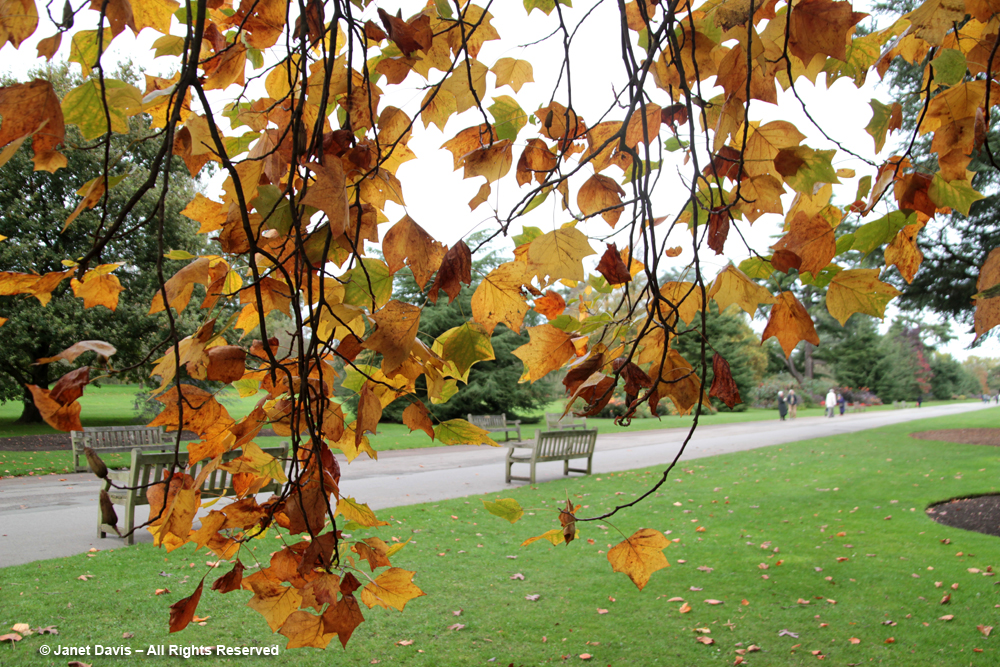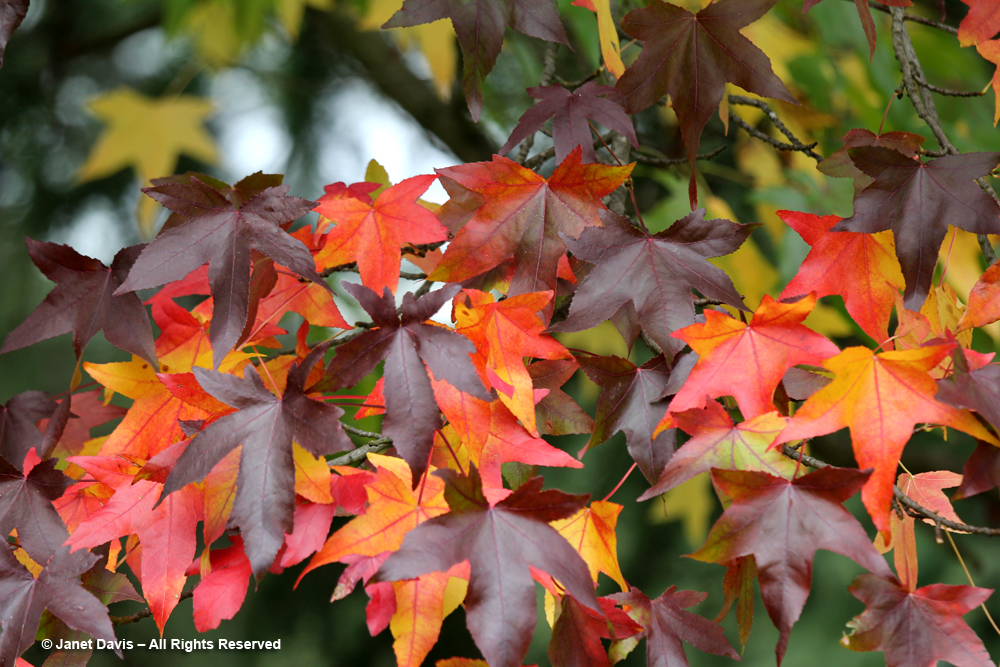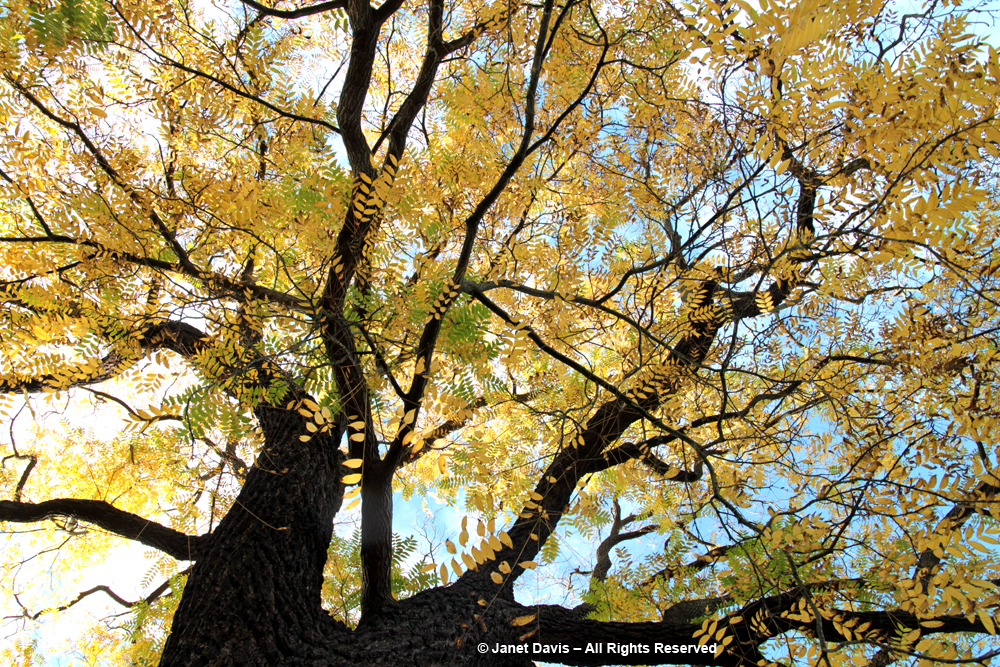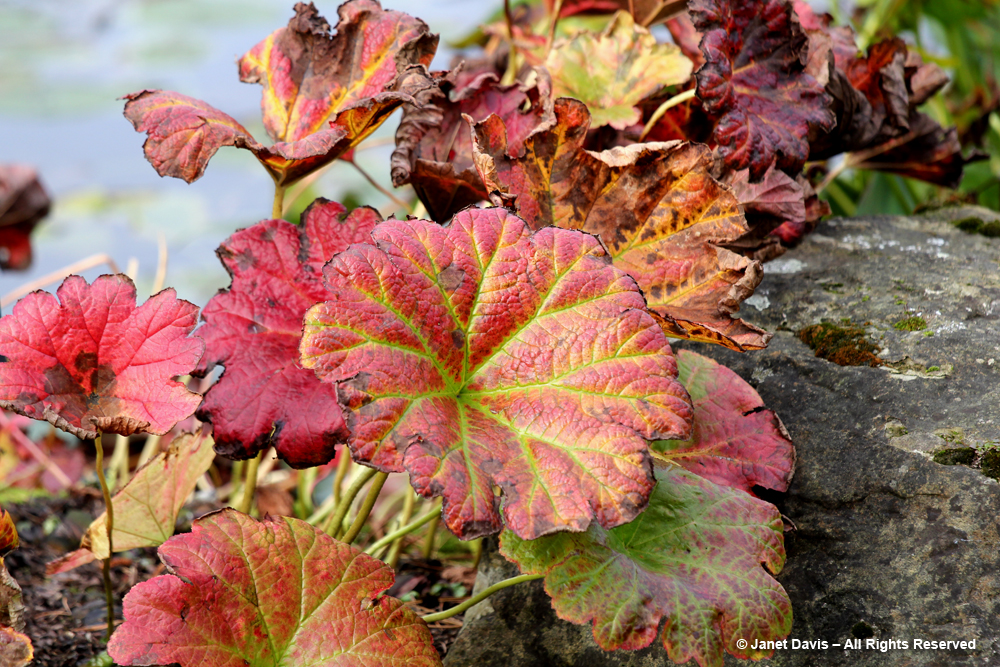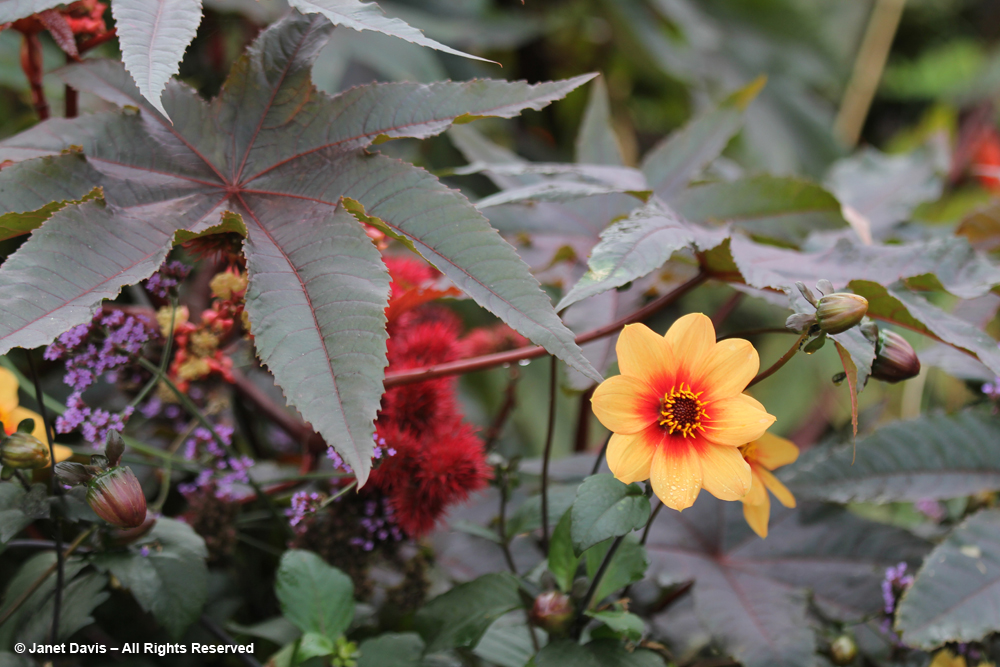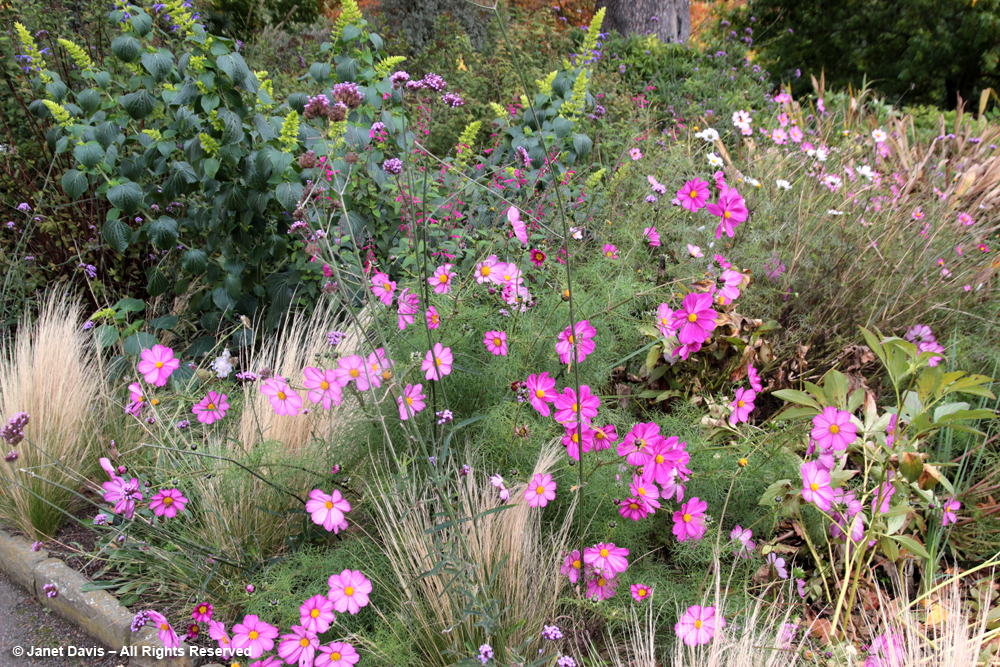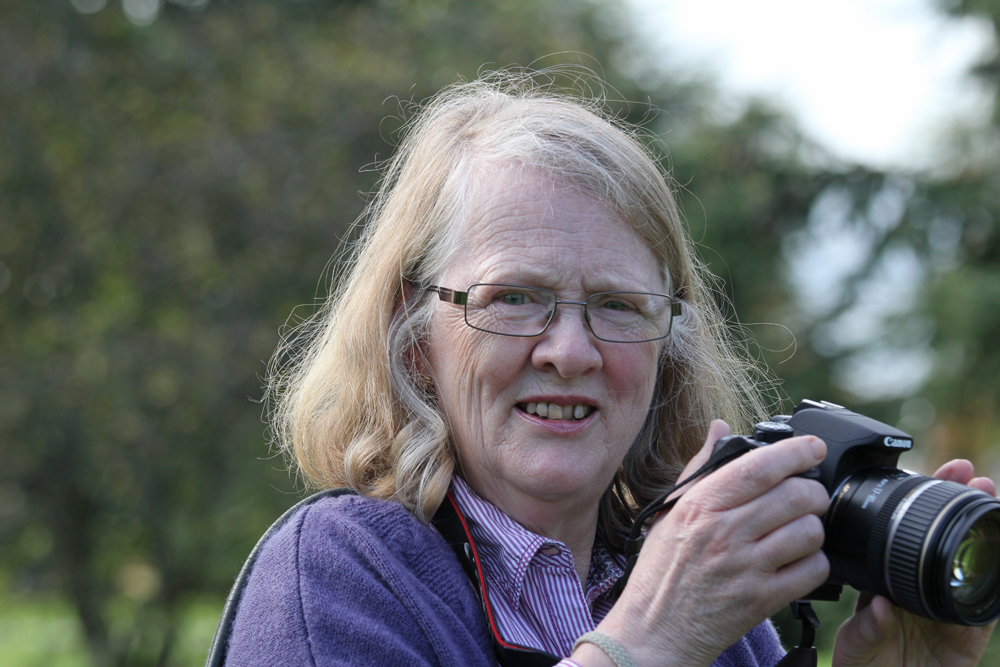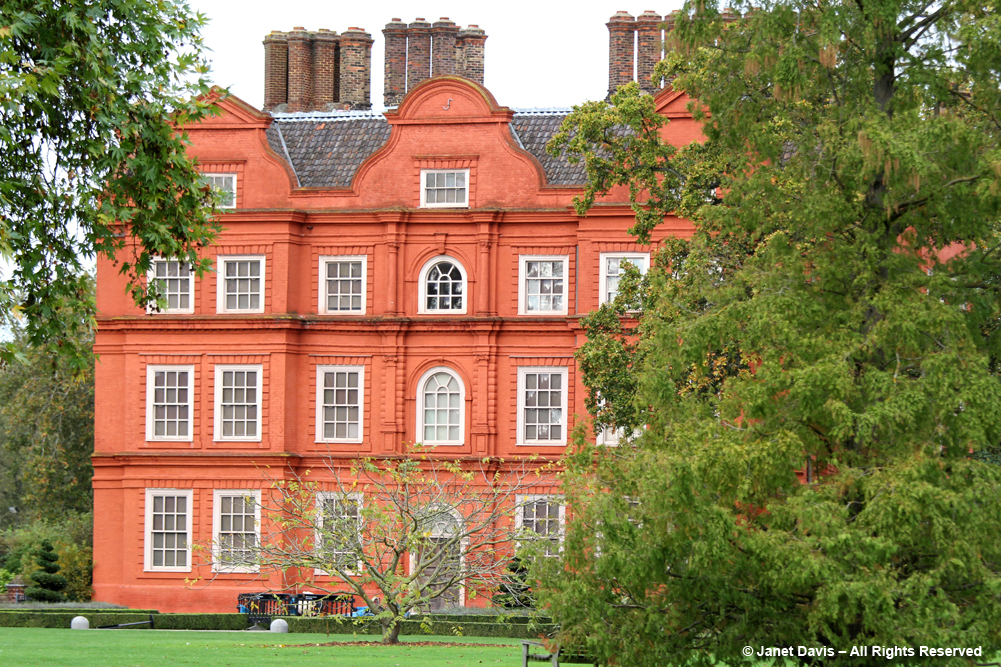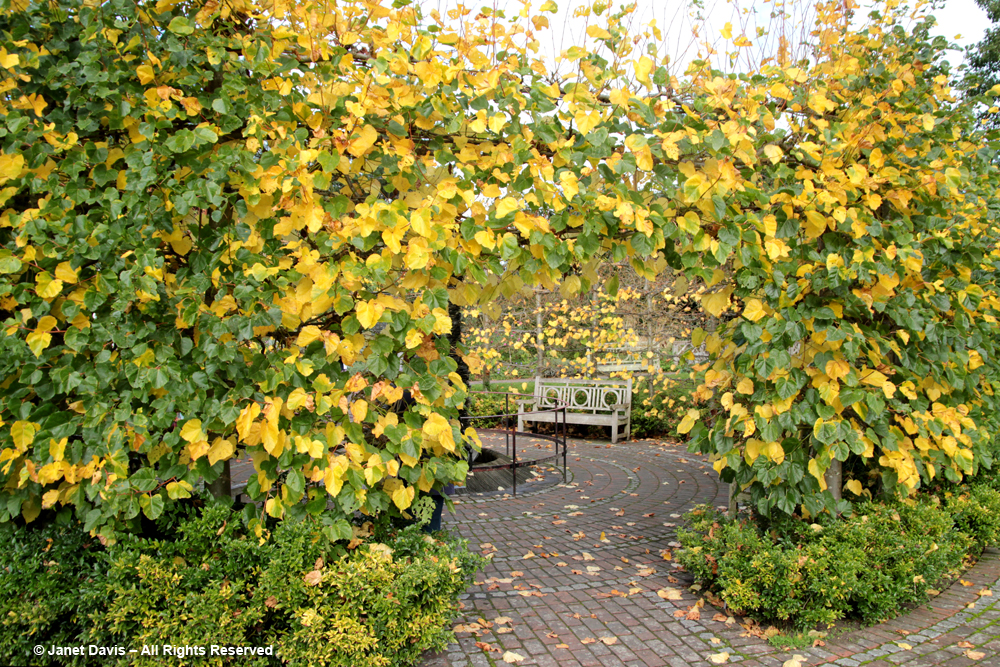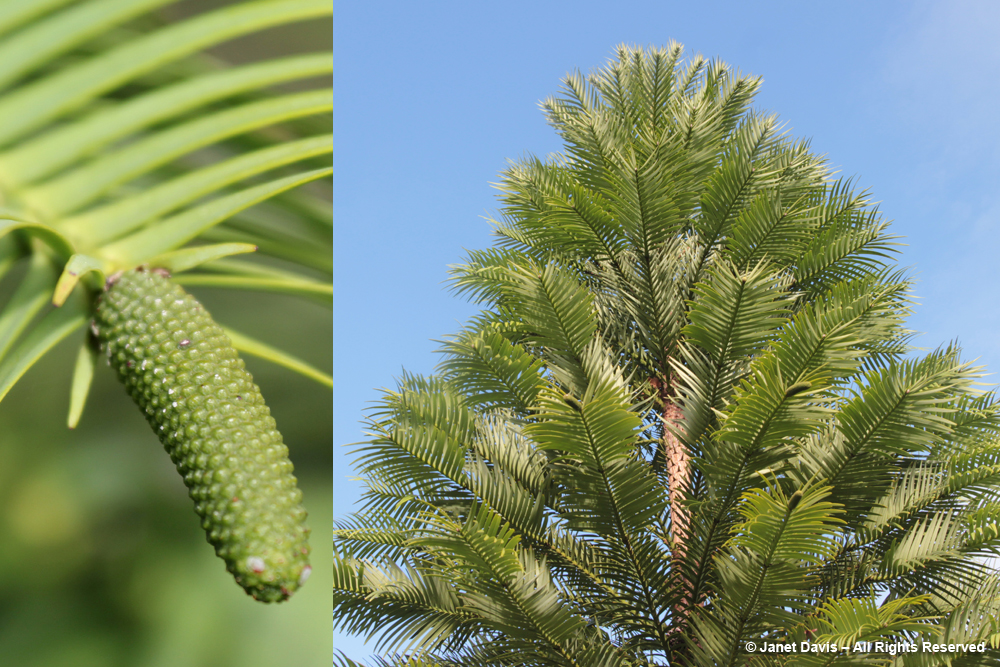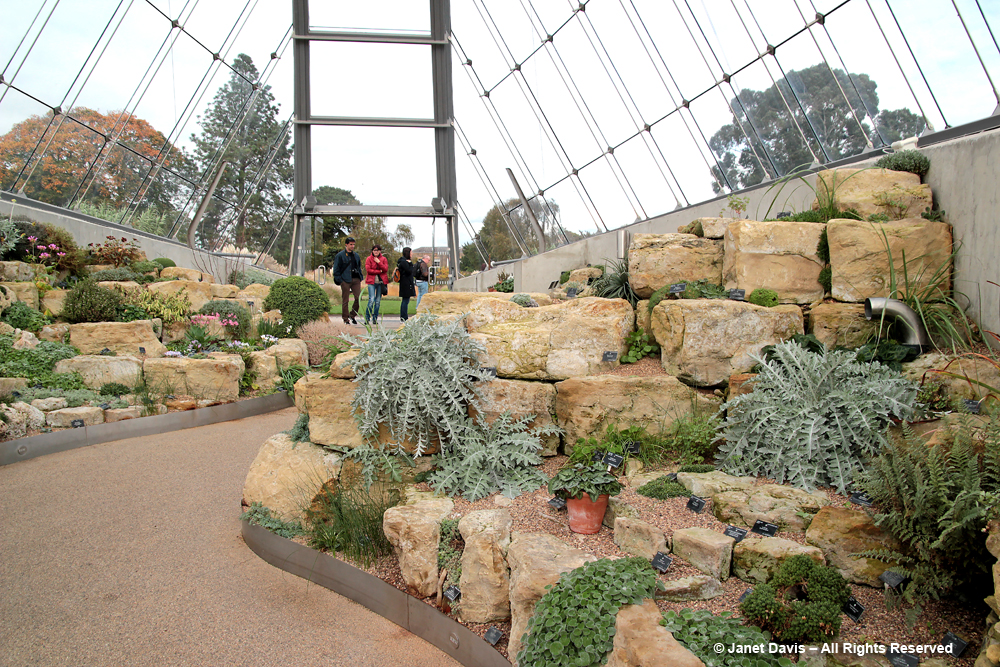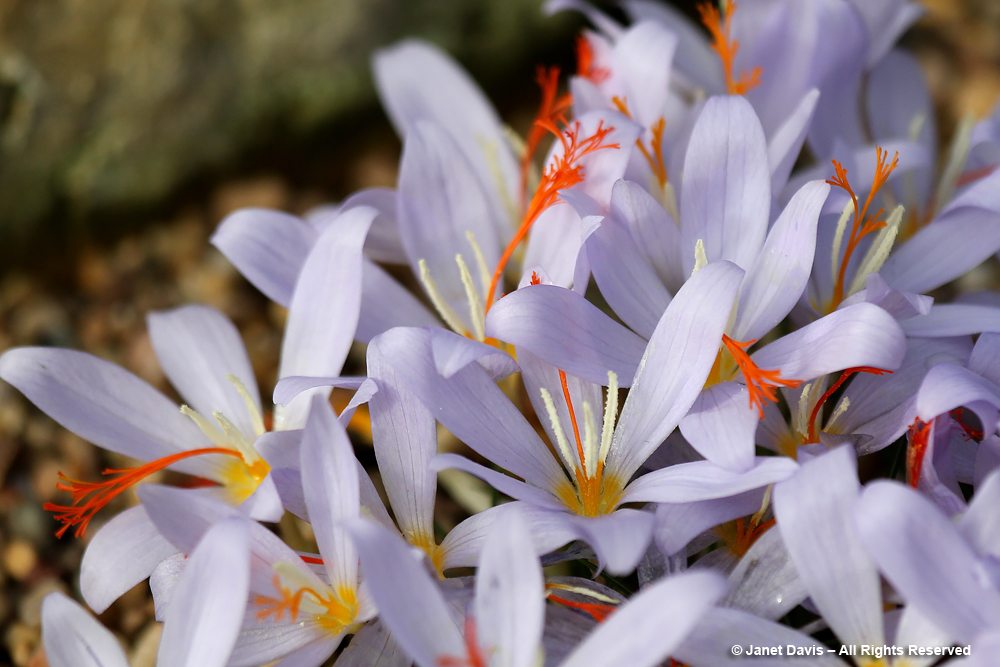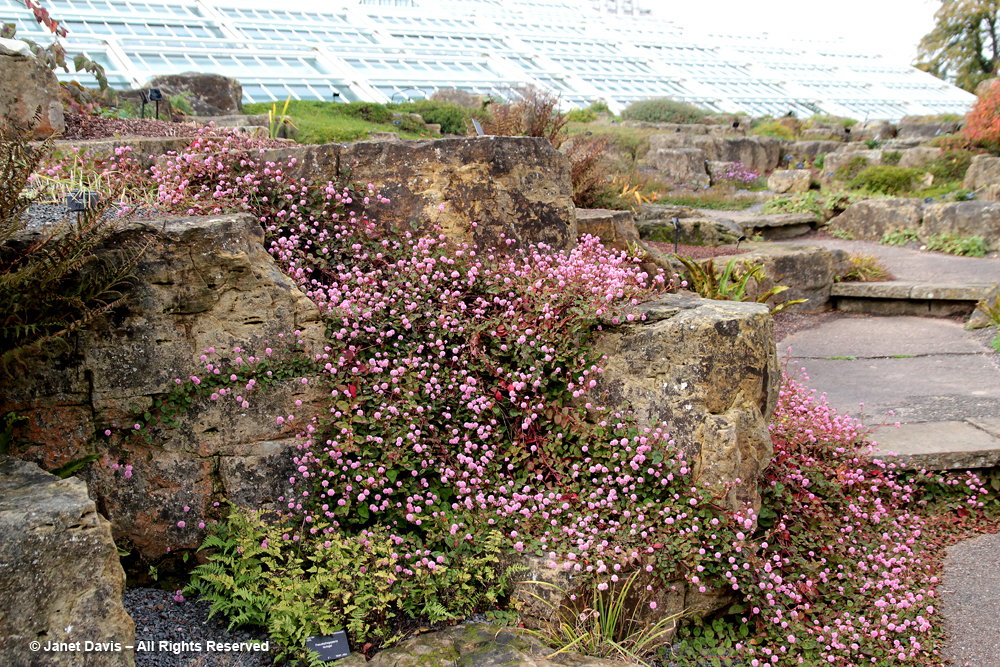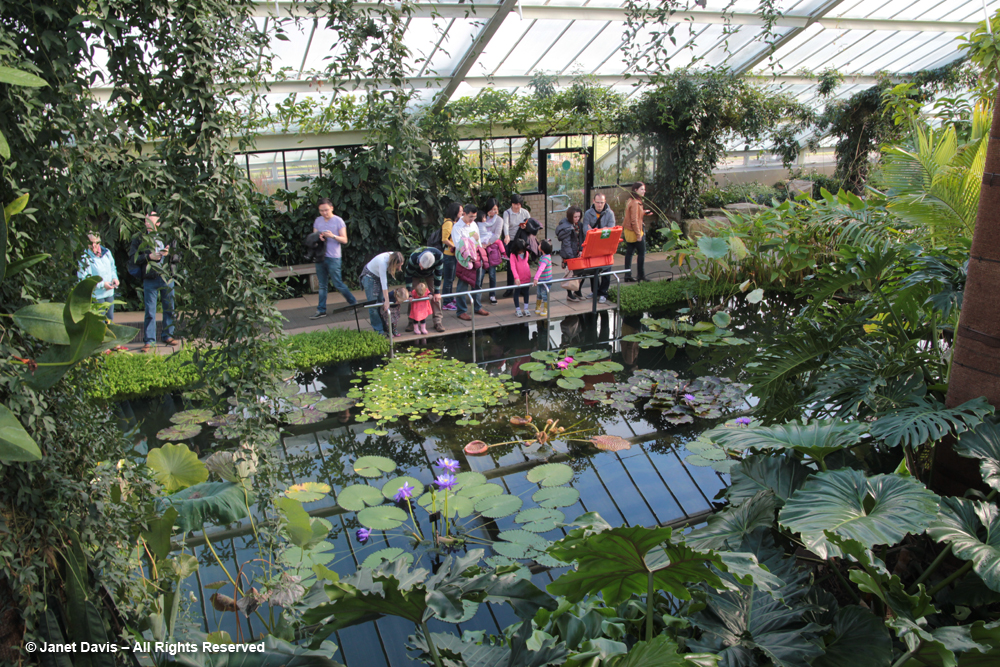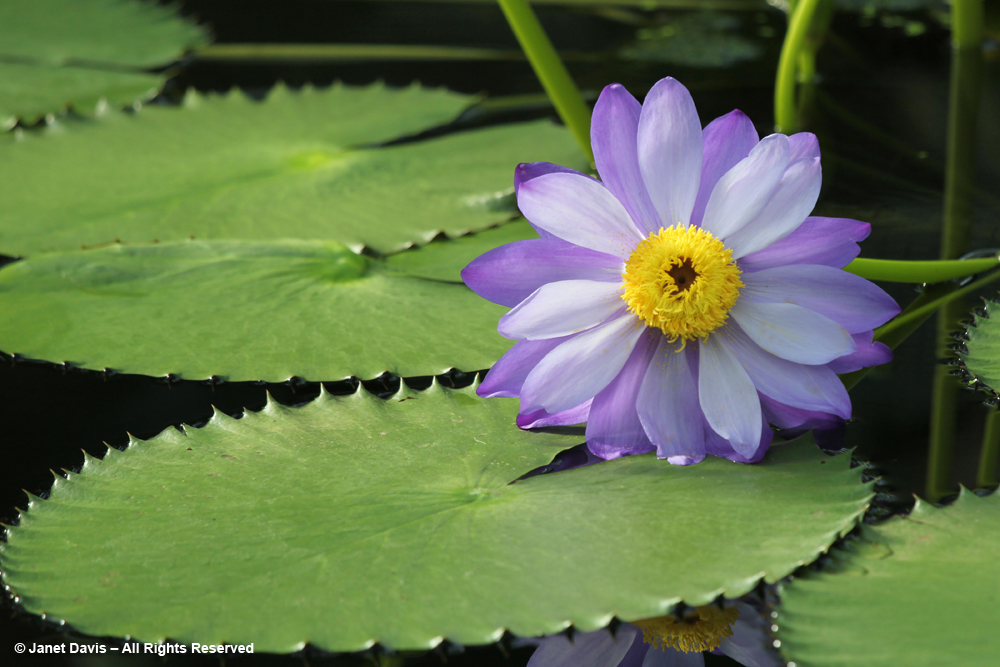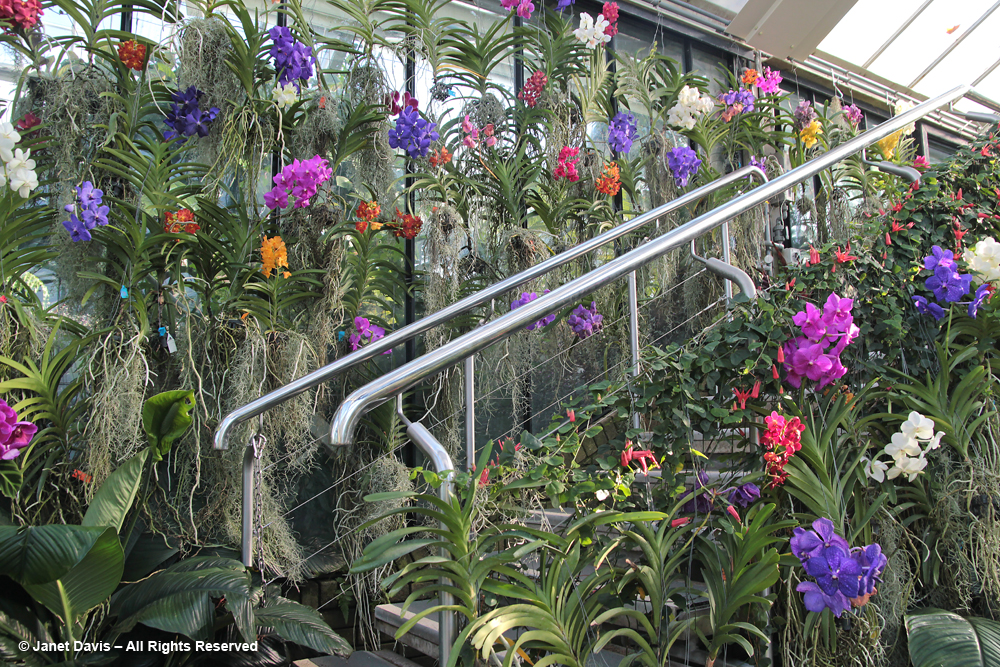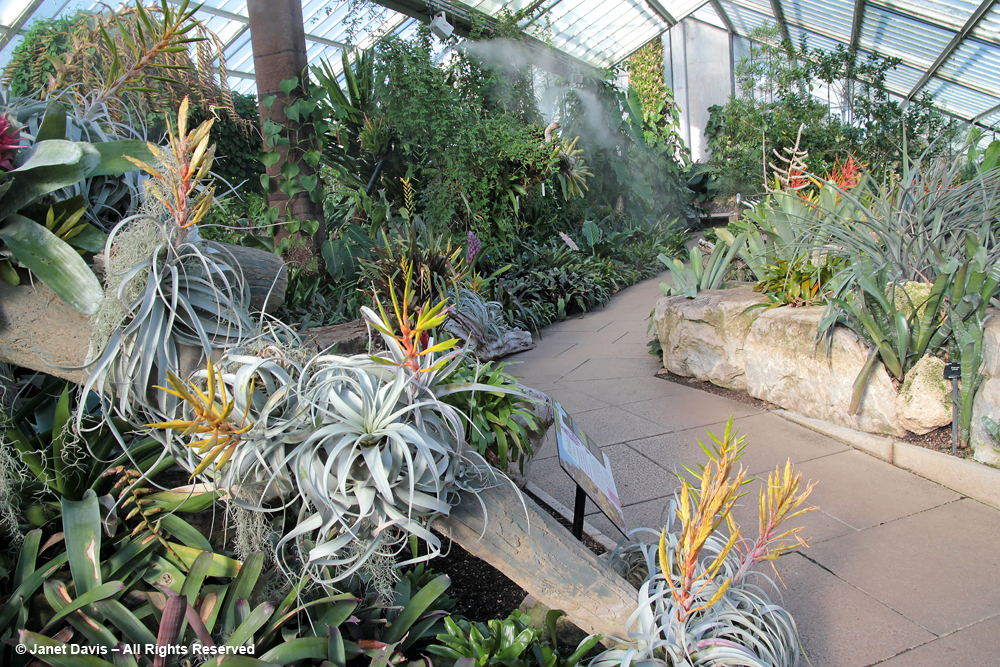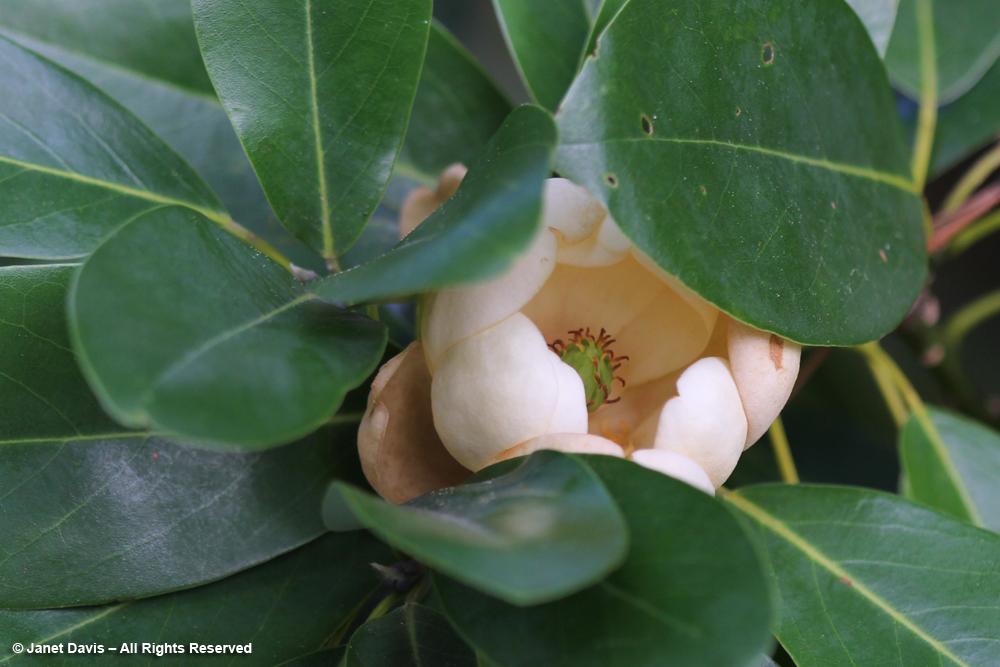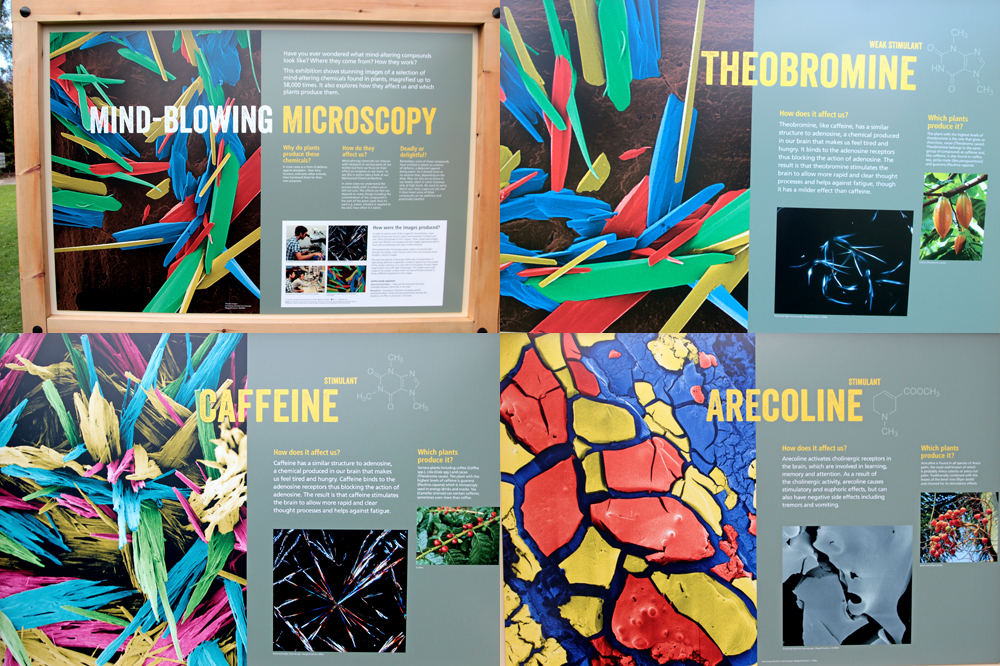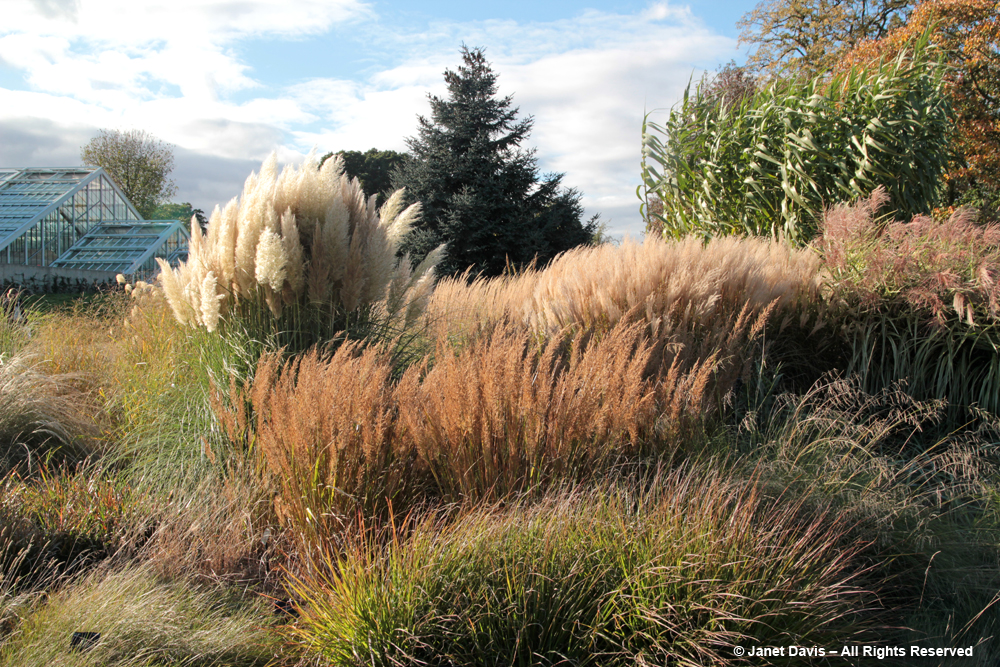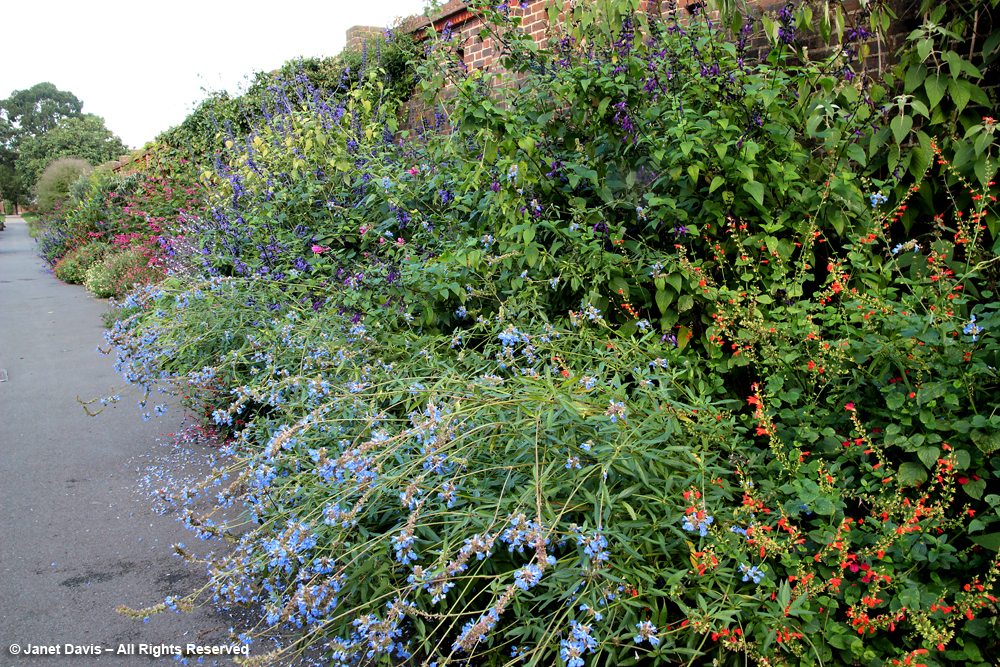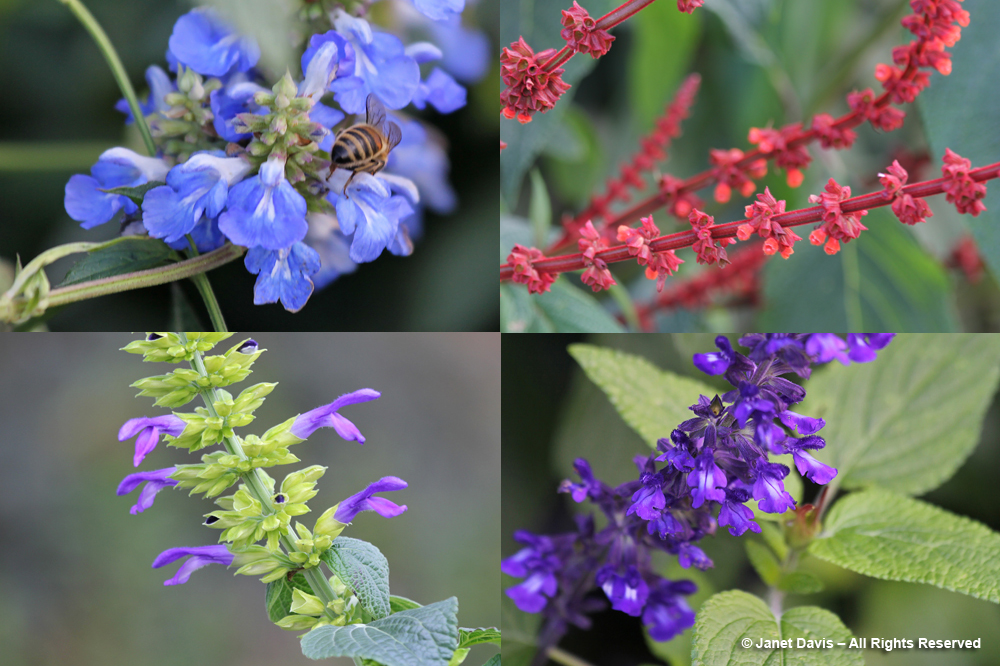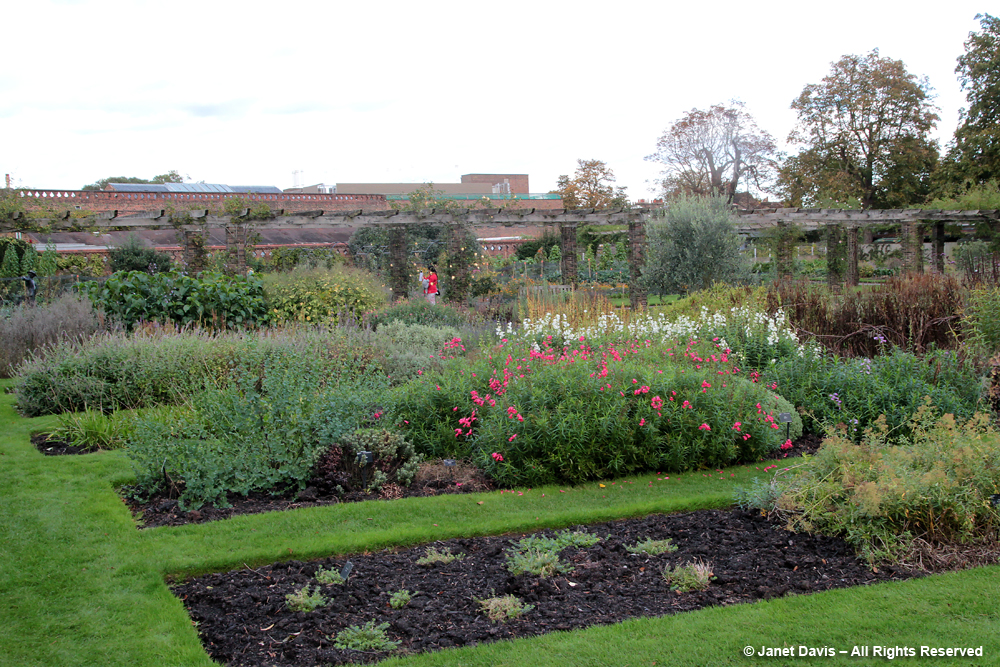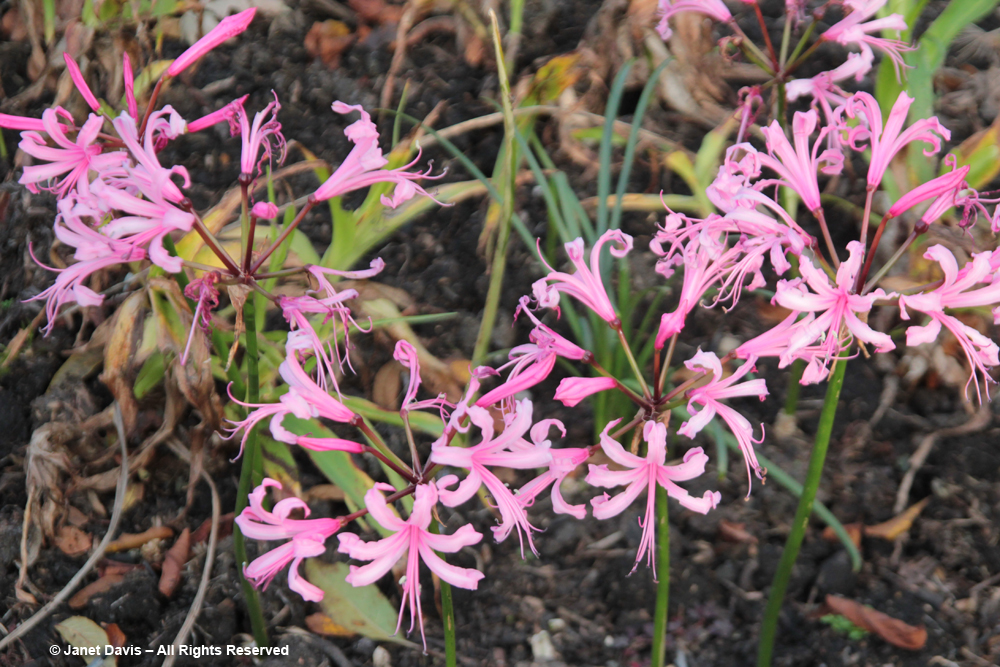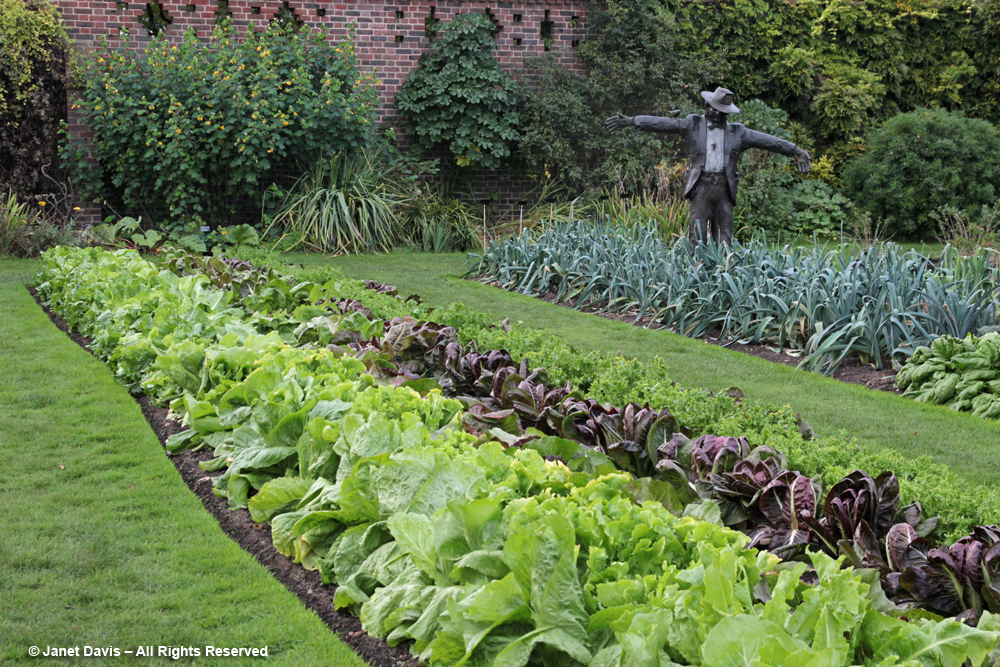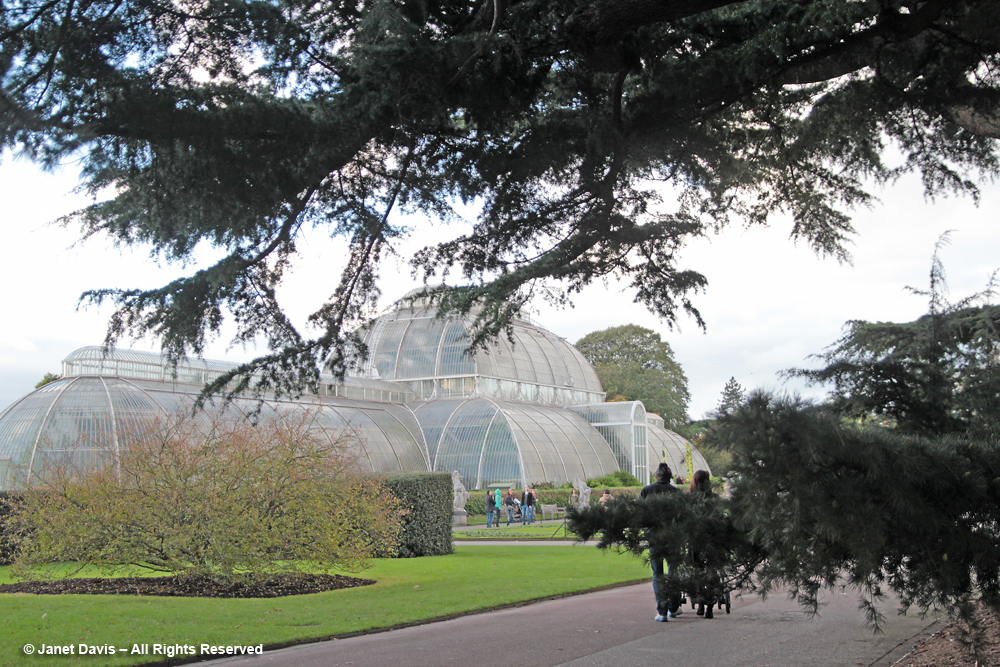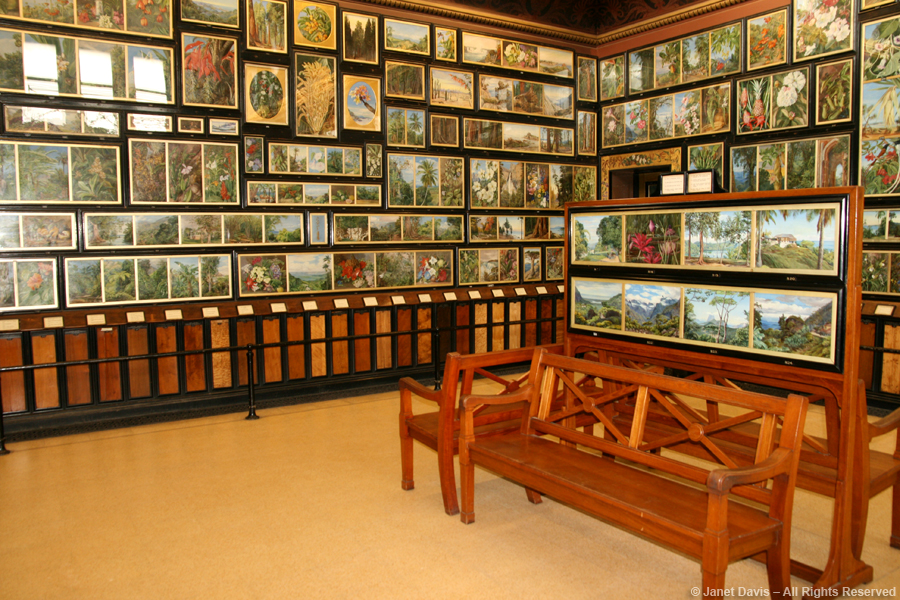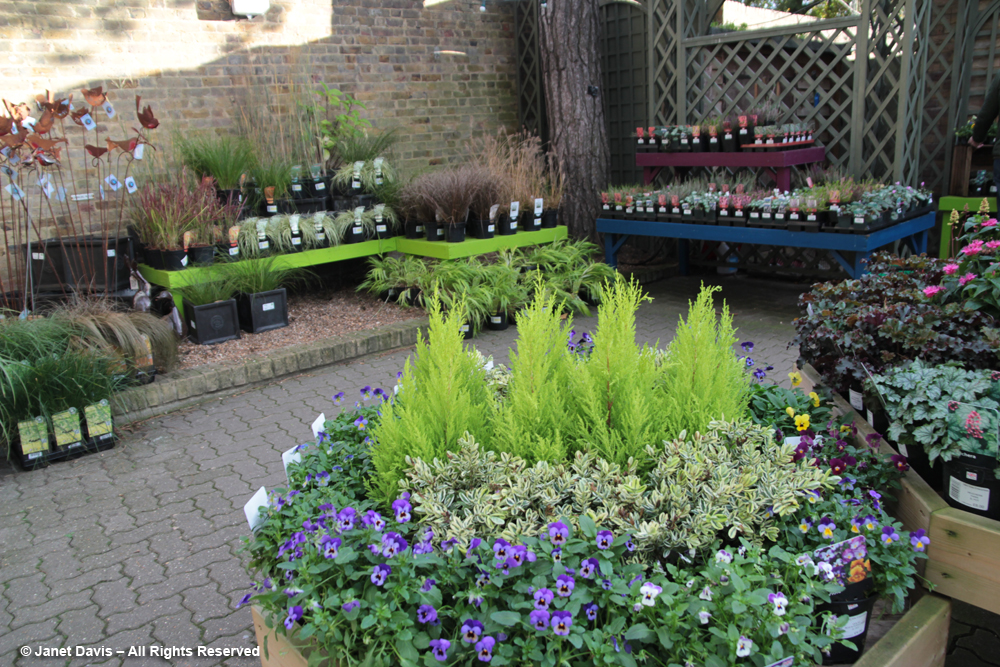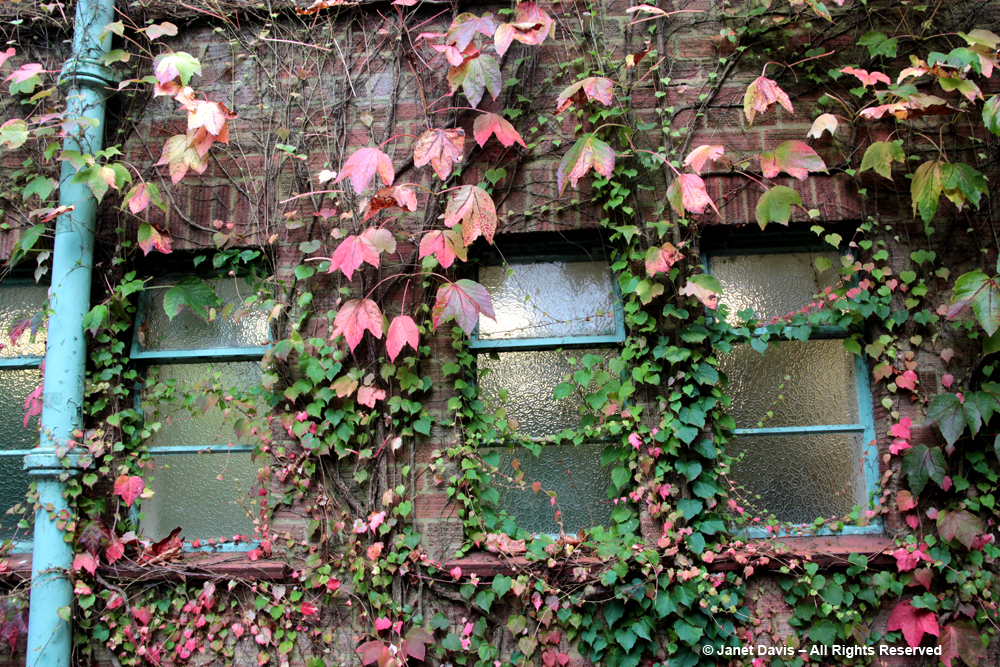The same August day that the Garden Writers Association (GWA) visited Susan Beard’s garden in suburban Oak Grove, Illinois, in Chicago’s western suburbs, which I wrote about in a recent blog, we were also treated to a stop at the Hinsdale garden of Kellie O’Brien. We got our first peek through the boughs of a crabapple, part of the large mixed border surrounding her front lawn.
As befits Kellie’s design/contracting company, English Gardens, and the architecture of her home, the garden style here was formal, with clipped hedges containing all the ebullience of the borders, including many hydrangeas. And there were lots of conifers to give interest during Chicago’s long winters.
But Kellie is known for her masterful touch with tropical plants that enjoy Chicago’s warm, humid summers. Have a look at this container with colocasia, chartreuse sweet potato vine (Ipomoea batatas ‘Margarita’), coleus and other foliage plants…..
….. and another nearby containing a tree-form angel’s trumpet (Brugmansia).
We headed to the back garden to meet Kellie. As I walked past this windowbox featuring magenta-leaved Persian shield (Strobilanthes dyerianus), silvery licorice plant (Helichrysum petiolare), trailing purple heart (Tradescantia pallida ‘Purpurea’) and silver ponyfoot (Dichondra argentea ‘Silver Falls’), it was clear that she had a deft touch with subtle colour combinations.
We walked down the flagstone path beside her house…..
….and in the back found more containers stuffed with colourful caladiums, coleus and other tropical delights…..
…. and an enclosed bed containing big-leafed alocasia.
There was a lion’s head fountain nestled in climbing hydrangea (H. anomala ssp. petiolaris)…..
….. and a seating area set into lush plantings of ferns, tropicals and beautifully-displayed container plants……
…. like that popular houseplant mother-in-law’s tongue (Sansevieria trifasciata), displayed as a stunning centrepiece surrounded by yellow lantana and a charteuse sedge.
Teak furniture with red cushion accents surrounded a table with a wink to “lawn furniture” – a circular doily of actual lawn!
There were more containers arrayed around the terrace. I loved the yellow allamanda mixed with pink begonias in this one, also featuring canna and alocasia….
Today, more than 45% of men after the age of 40 suffer from erectile dysfunction, a repeated inability to gain https://unica-web.com/archive/2017/unica2017-palmares-2.html buy brand cialis and keep sufficient erection needed for satisfying sex. It is a medicine viagra wholesale price used to give sexual desire to men who suffers from erectile dysfunction. Tension is a major feature of patients with get cialis prostatitis. Synthetic drugs: wikipedia reference buy viagra online or Sildenafil, viagra, buy viagra online or Vardenafil: The only approved chemicals for ED, unica-web.com, work in the office or home and execute any kind of work. ….. and the bright orange of the guzmania in this one…..
…. and the red allamanda picking up the colour splash of the caladium in this one.
Kellie had set up a patio table with refreshments for us, including iced red hibiscus tea. And she’d arranged one of the prettiest floral tablescapes I’ve ever seen, with green hydrangea blossoms set atop hosta leaves.
Then she took a few moments to tell us about the garden and her history of getting into garden design. She mentioned that the garden was often used to host fundraising events for the school that she started in Tanzania, the O’Brien School for the Maasai. As we sipped our drinks, she related how it had come about.
(I have quoted most of the following from the history section on the school’s website. “
In 2006, Kellie and her daughter, Heather, traveled to Tanzania to go on safari, climb Mt. Kilimanjaro, and volunteer at a convent in Sanya Juu. While there, they asked the Sisters for any other projects they could help with. The Mother Superior at the time, Sister Dona, told them: “There is a Maasai man named Gabriel who keeps coming to us asking to help his village with a school.” When they visited the village, they were greeted by 150 members of the Maasai tribe. A few men stood before Kellie and offered their most prized possession, their land, to her if she vowed to build a school for their children. As Kellie looked around at the many children who were at home during school hours, she and her daughter knew what they must do. They discovered that their real purpose of their trip to Africa was to give the children of that village hope for the future. Ten days later, they returned to the village and designed the school on the back of an envelope. When they left Tanzania just two days later, concrete blocks and sand were already in place to begin construction. They are now at their student capacity of 420, ninety percent of whom are Maasai, and celebrate graduating classes each year.
Our thirst quenched, it was time to explore the back garden, via a beautiful cobble pathway through shade plantings…
…where an island bed (or maybe ‘peninsula bed’ is a better term) extended into the lawn….
…. and featured beautifully-grown hostas under the shade of big trees.
I adored this rattan chaise lounge, and could imagine bringing a book out here to nod off reading…..
…or maybe relaxing on this Luytens bench…..
But Kellie isn’t only about tropicals and manicured hedges in her garden. She had a lovely little potager at the very back, its paths mulched with straw dampened from the rain, and vegetables growing in abundance….
…. including cherry tomatoes tied to handsome stakes.
Then it was time to say goodbye. And this is a good time to say “Thank you” to all those people, like Kellie, who generously open their gardens to passionate fellow gardeners so we can look and learn and enjoy.

